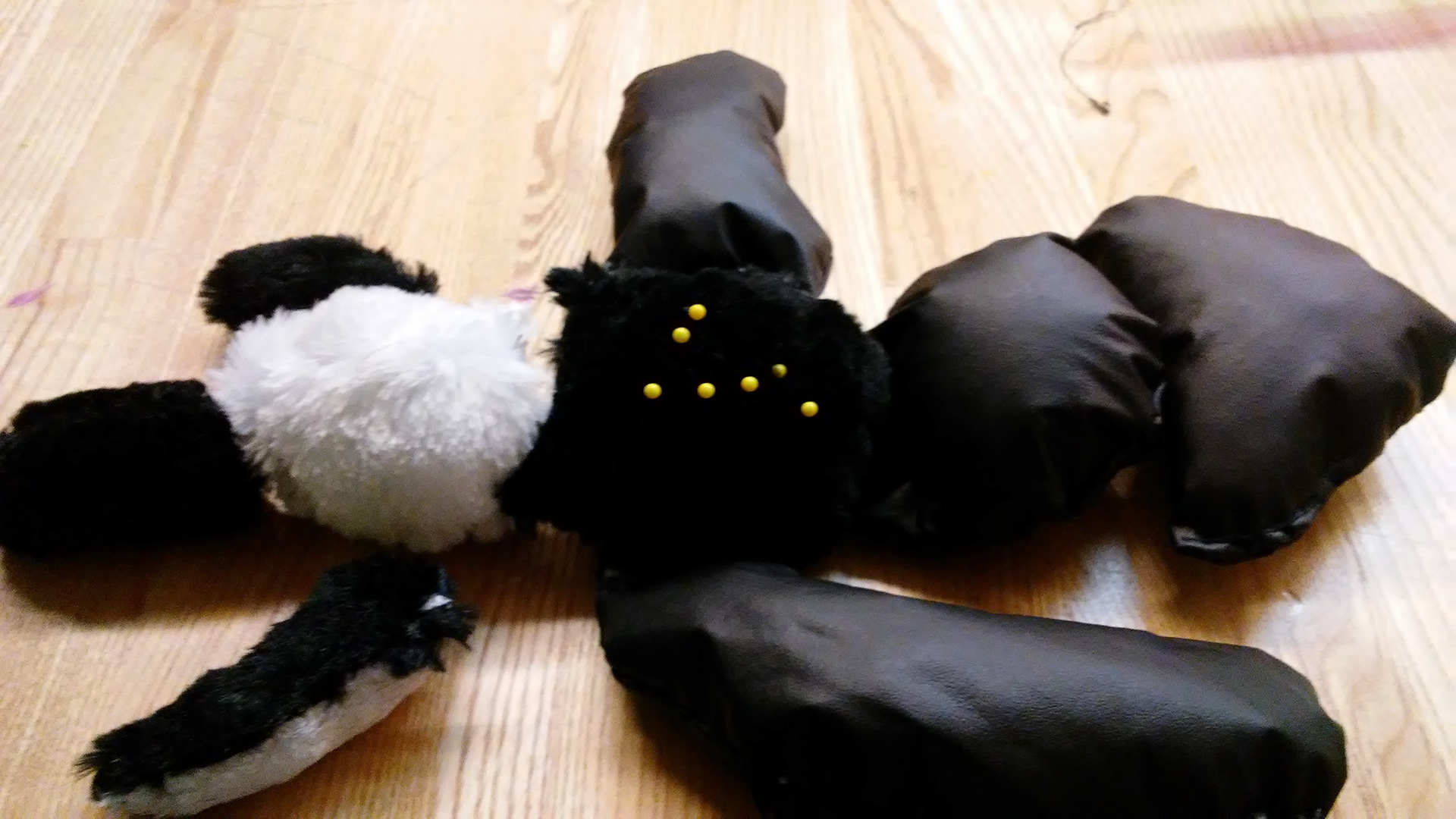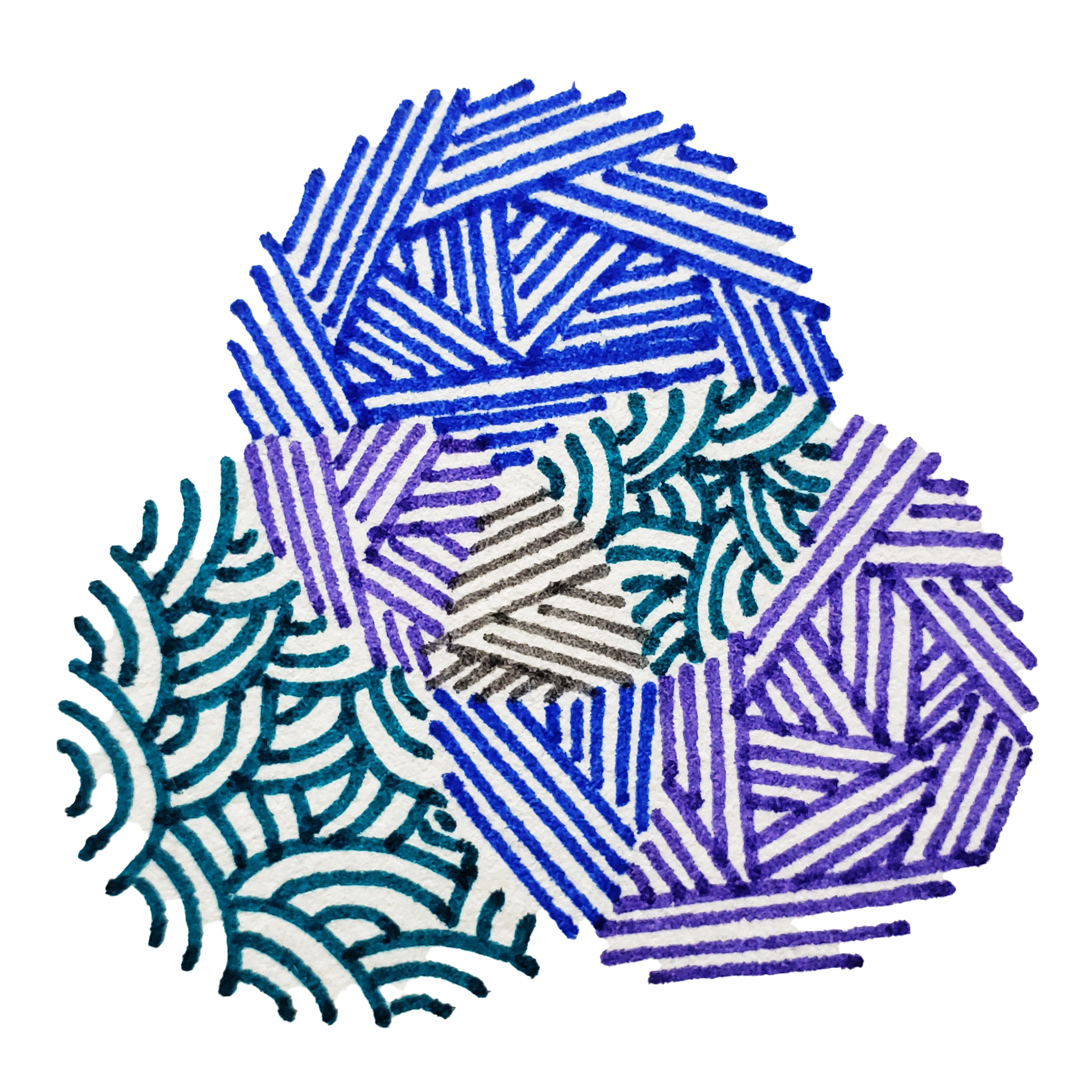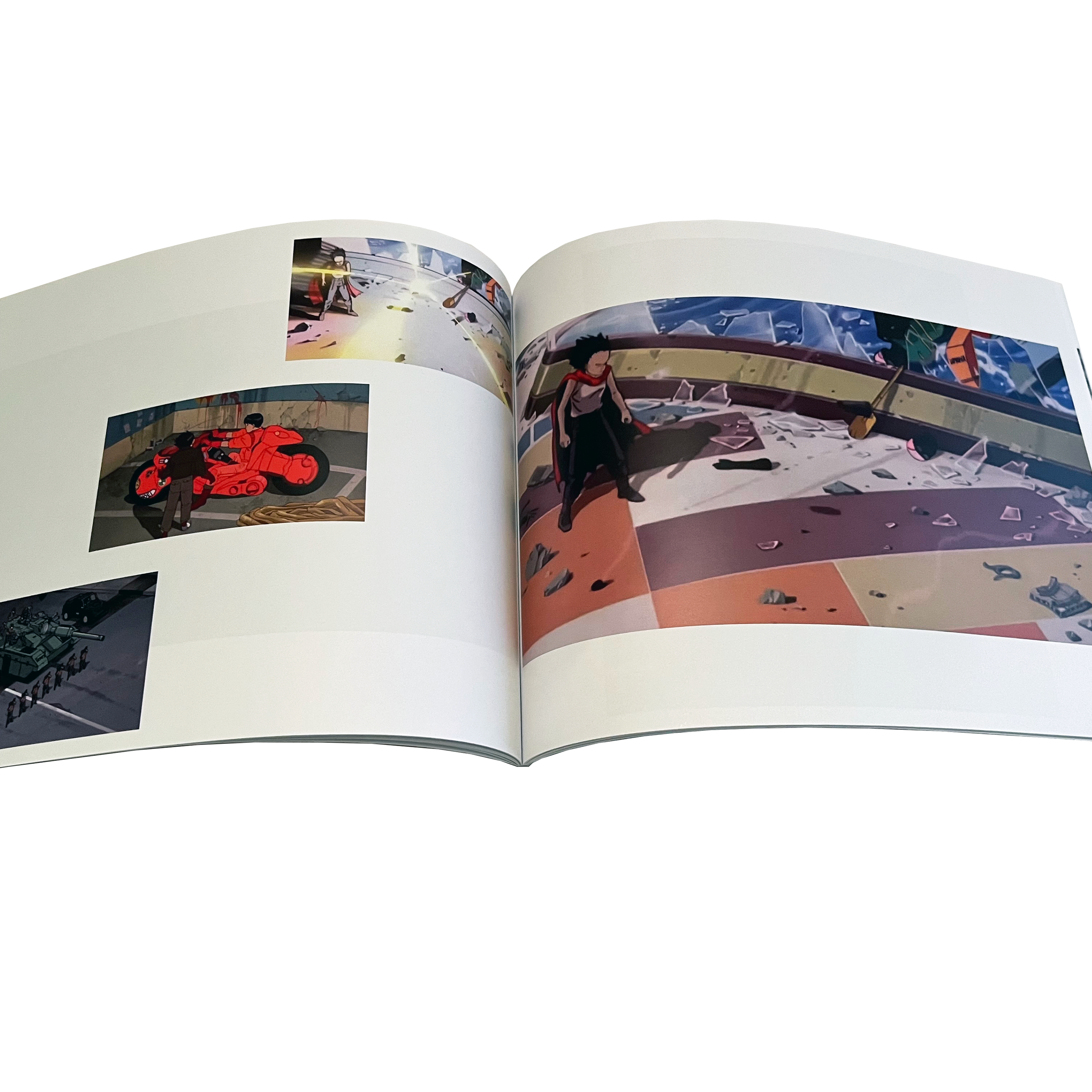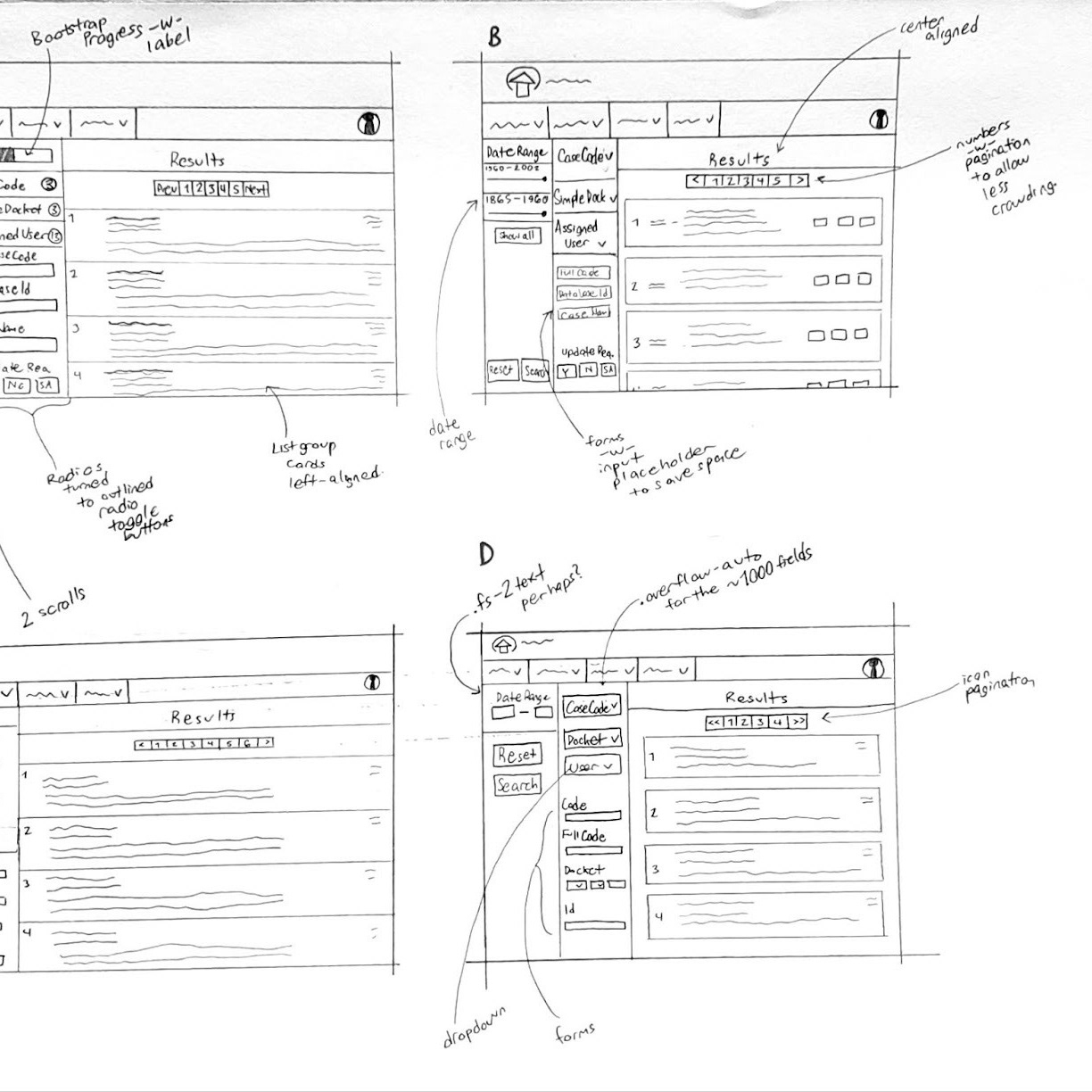Rain Chained (2024) Classwork. Instructors: Mark Meier, Chris Humphrey
This project explores the design and fabrication of clay facade modules inspired by “rain chain” principles. The modules are designed to slow water dispersal and capture runoff through sculptural channels and surface characteristics, enhancing water management in outdoor environments. In addition, the facade system manipulates sunlight by applying different colored glazes to either side of the module, allowing users to influence temperature and light levels behind the screen.
Key environmental factors considered in the design include: water flow management (through the module's form), thermal control (using glazes that reflect or absorb heat), and sensor integration (for real-time environmental feedback on temperature and humidity).
My role(s) and contributions to this project include: the design and generation of the ceramic modules, initial clay 3D printing testing, Python coding, and electronics assembly (LEDs, I2C sensor, temp and humidity sensor).
Key environmental factors considered in the design include: water flow management (through the module's form), thermal control (using glazes that reflect or absorb heat), and sensor integration (for real-time environmental feedback on temperature and humidity).
My role(s) and contributions to this project include: the design and generation of the ceramic modules, initial clay 3D printing testing, Python coding, and electronics assembly (LEDs, I2C sensor, temp and humidity sensor).
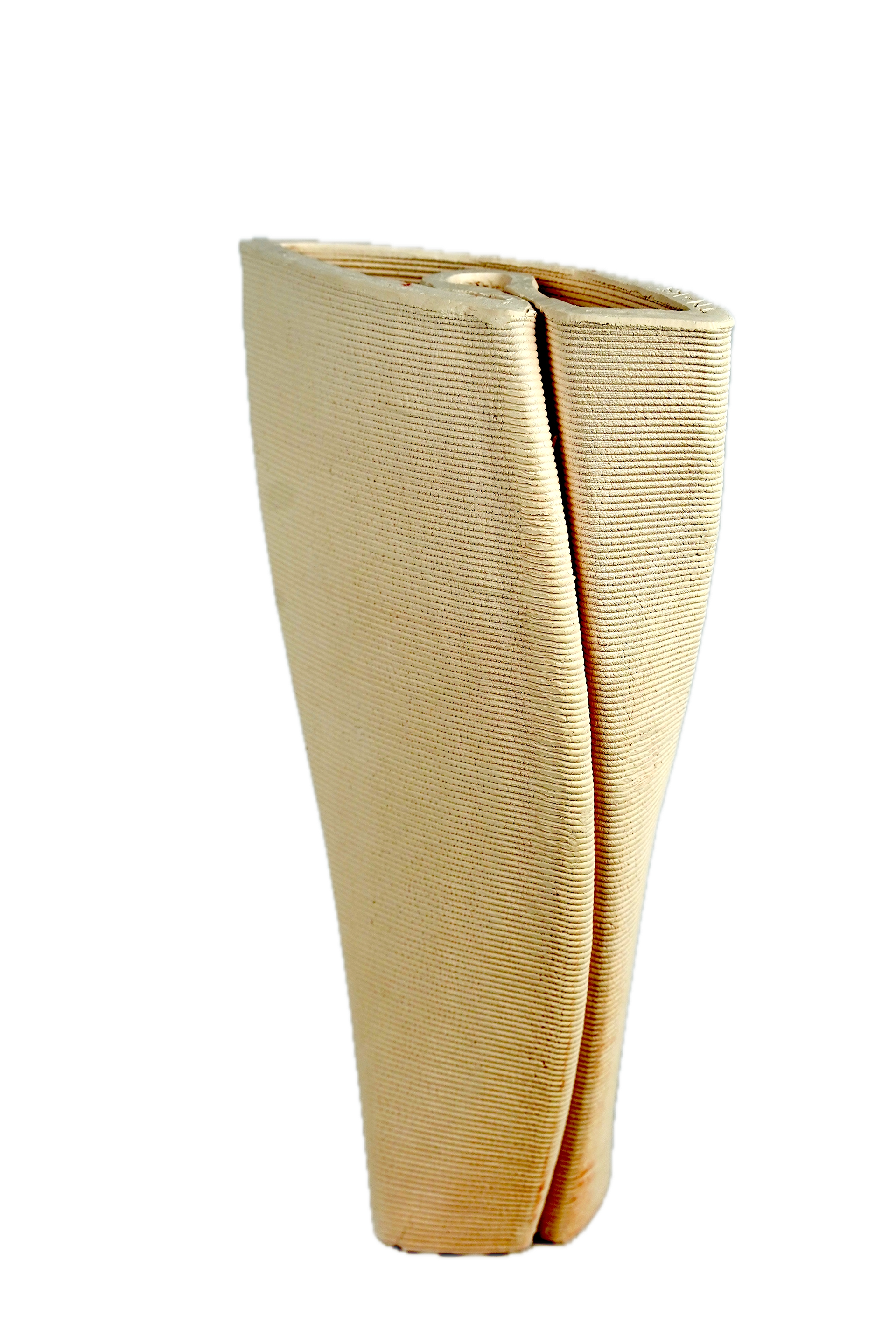
A shot of the finalized eye-shaped 3d printed ceramic module.
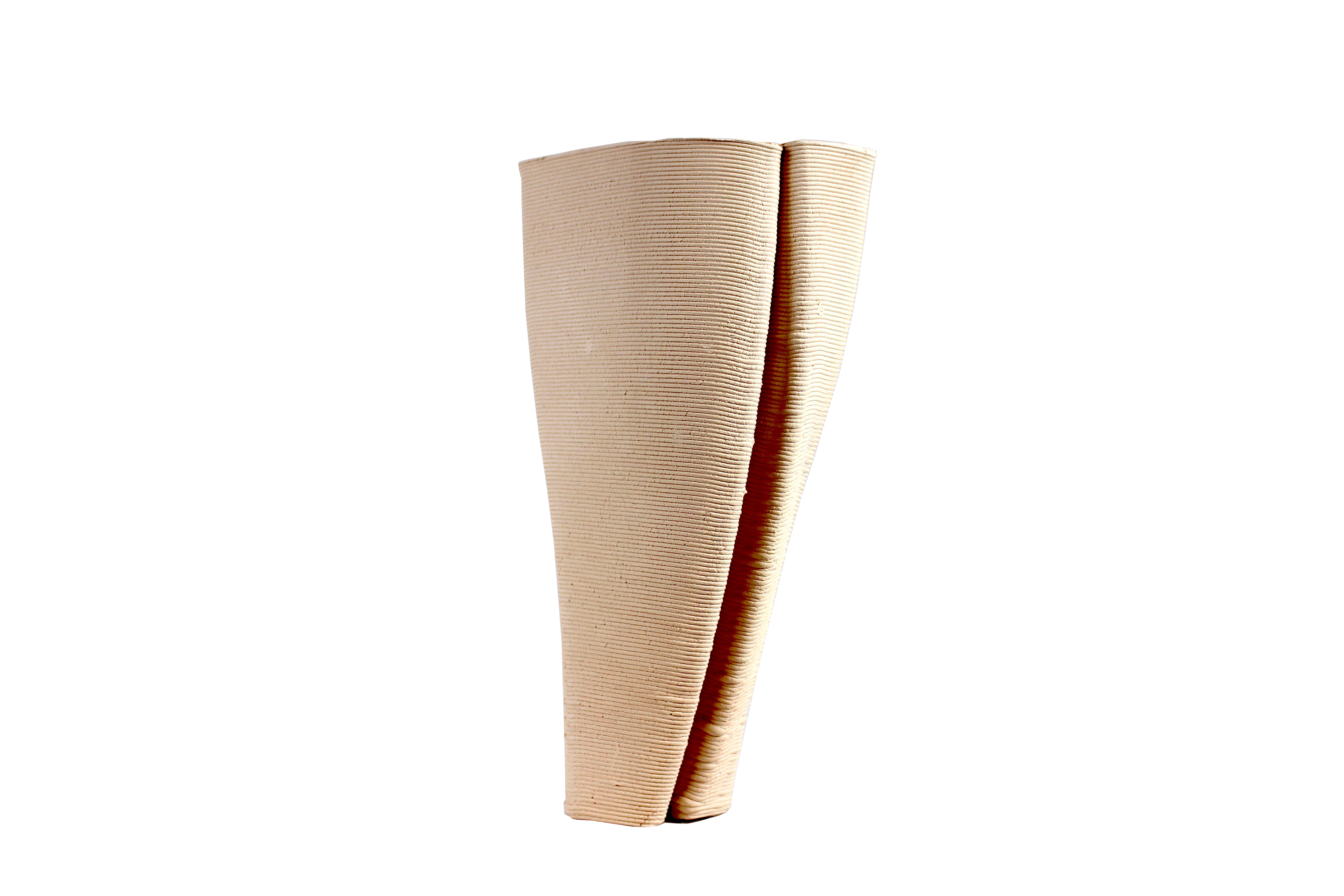
A shot of the final leaf-shaped 3d printed ceramic module.

A shot of the final x-shaped 3d printed ceramic module.

Top view of the eye-shaped ceramic module.
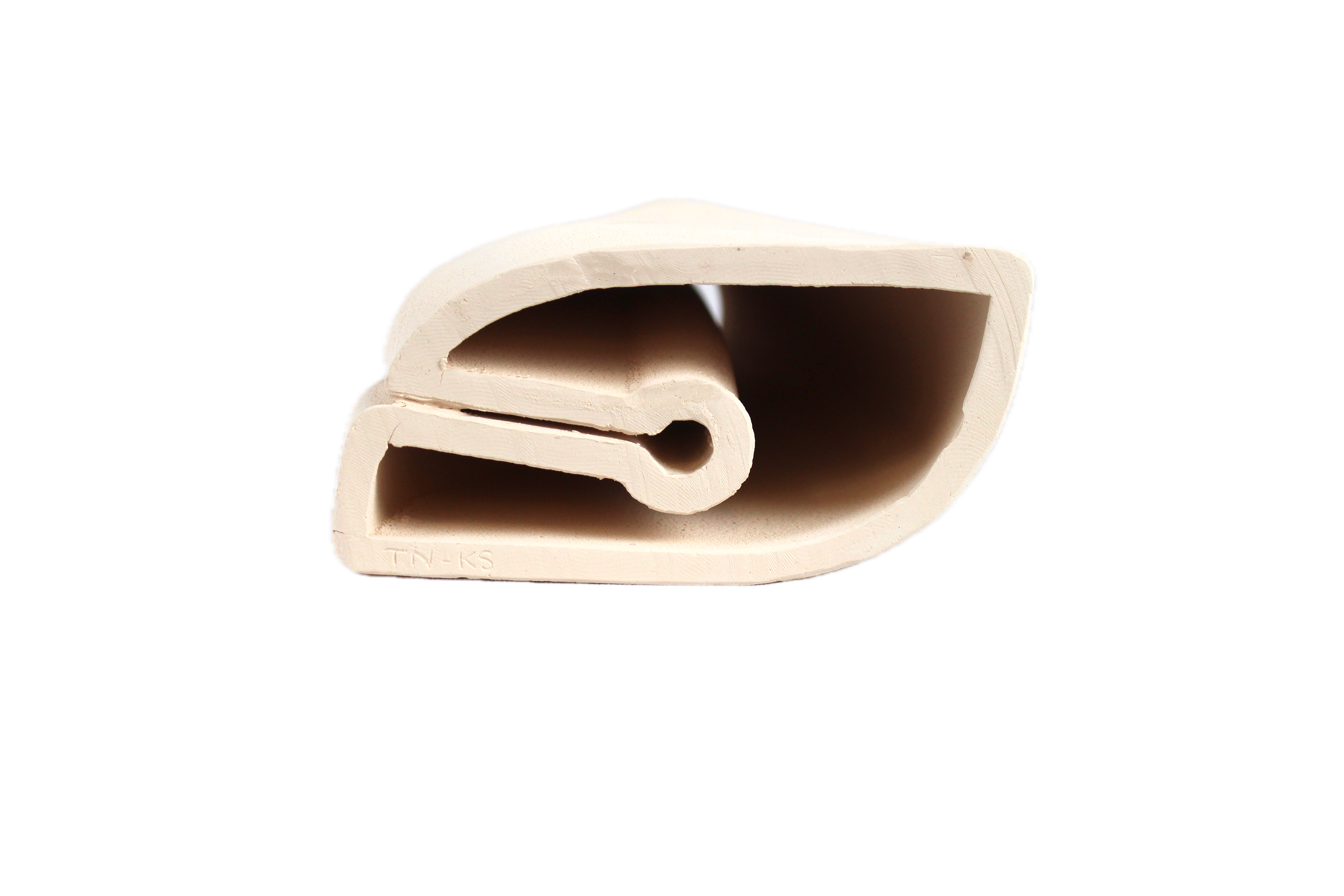
Top view of the leaf-shaped ceramic module.
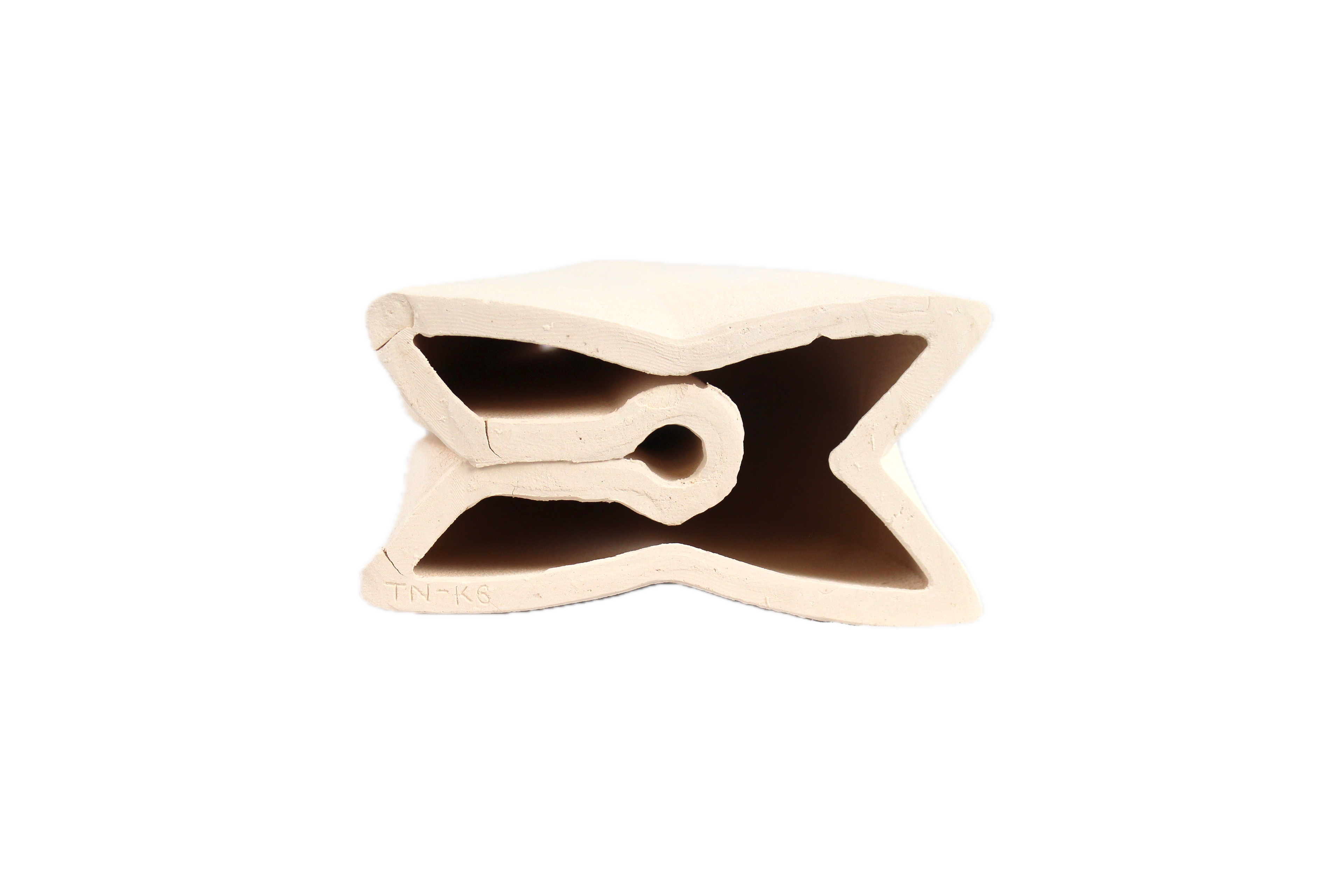
Top view of the x-shaped ceramic module.
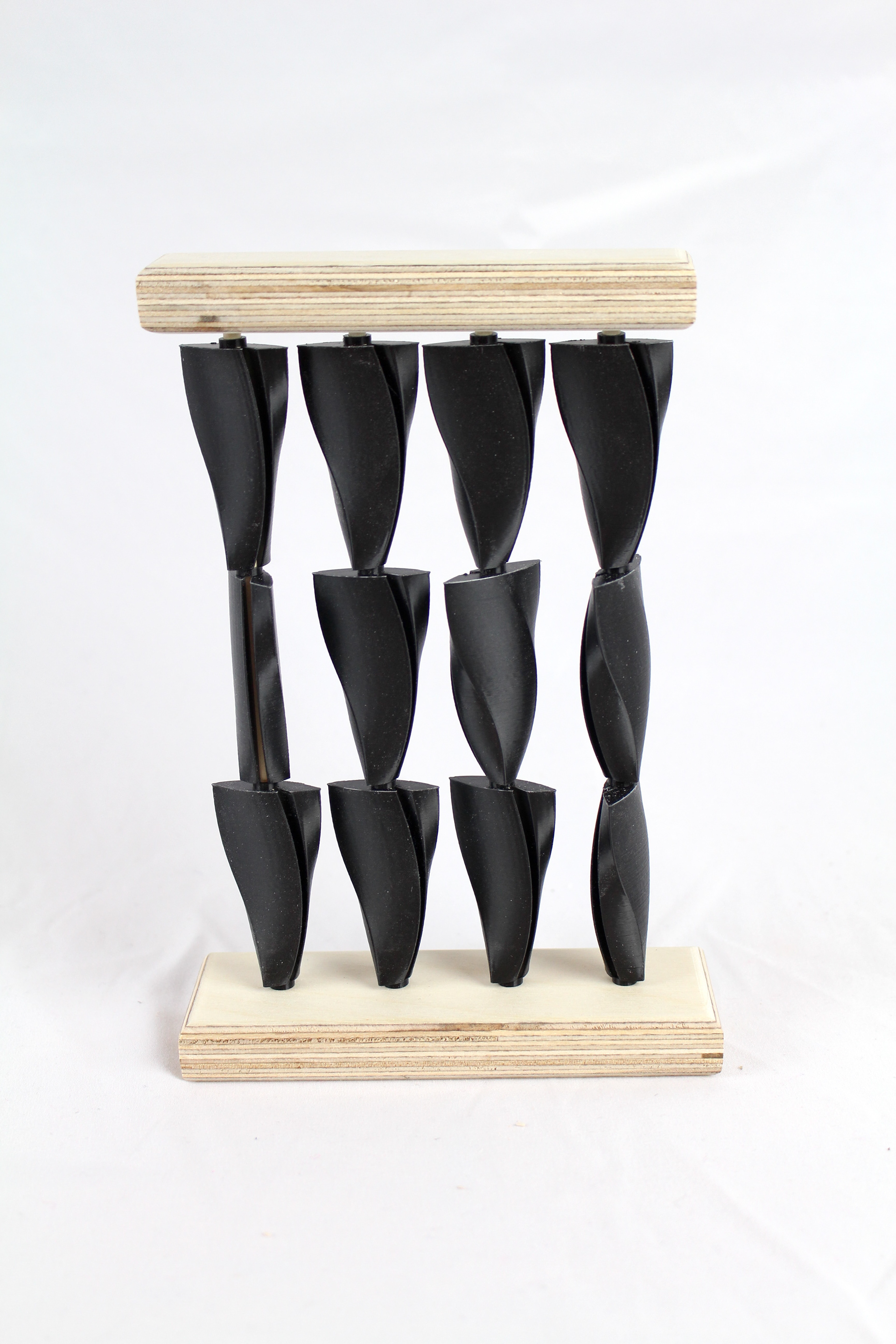
Shots of small scale 3d printed PLA and wood models showcasing the arrangements of the three different finalized shapes.

Shots of small scale 3d printed PLA and wood models showcasing the arrangements of the three different finalized shapes.
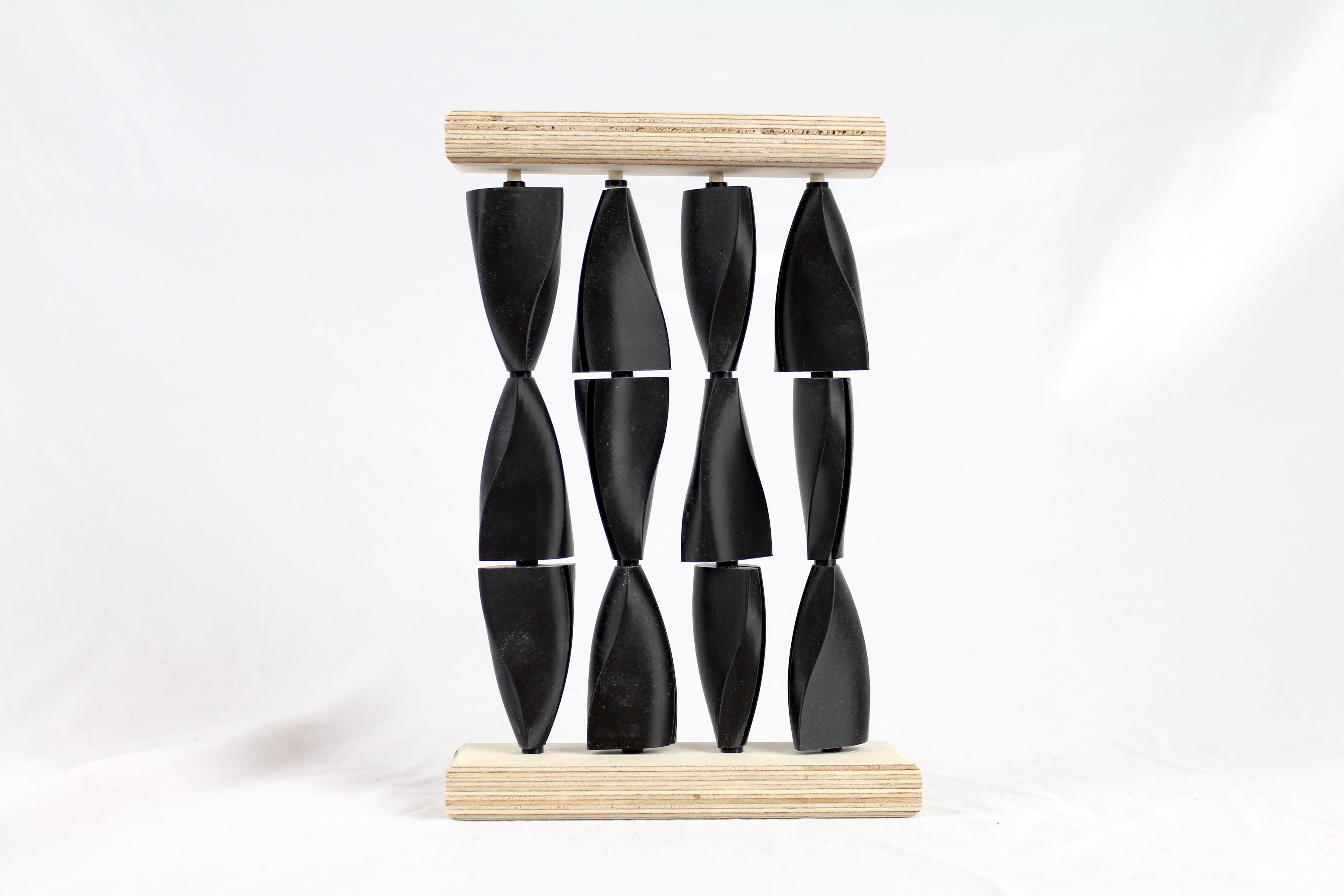
Shots of small scale 3d printed PLA and wood models showcasing the arrangements of the three different finalized shapes.
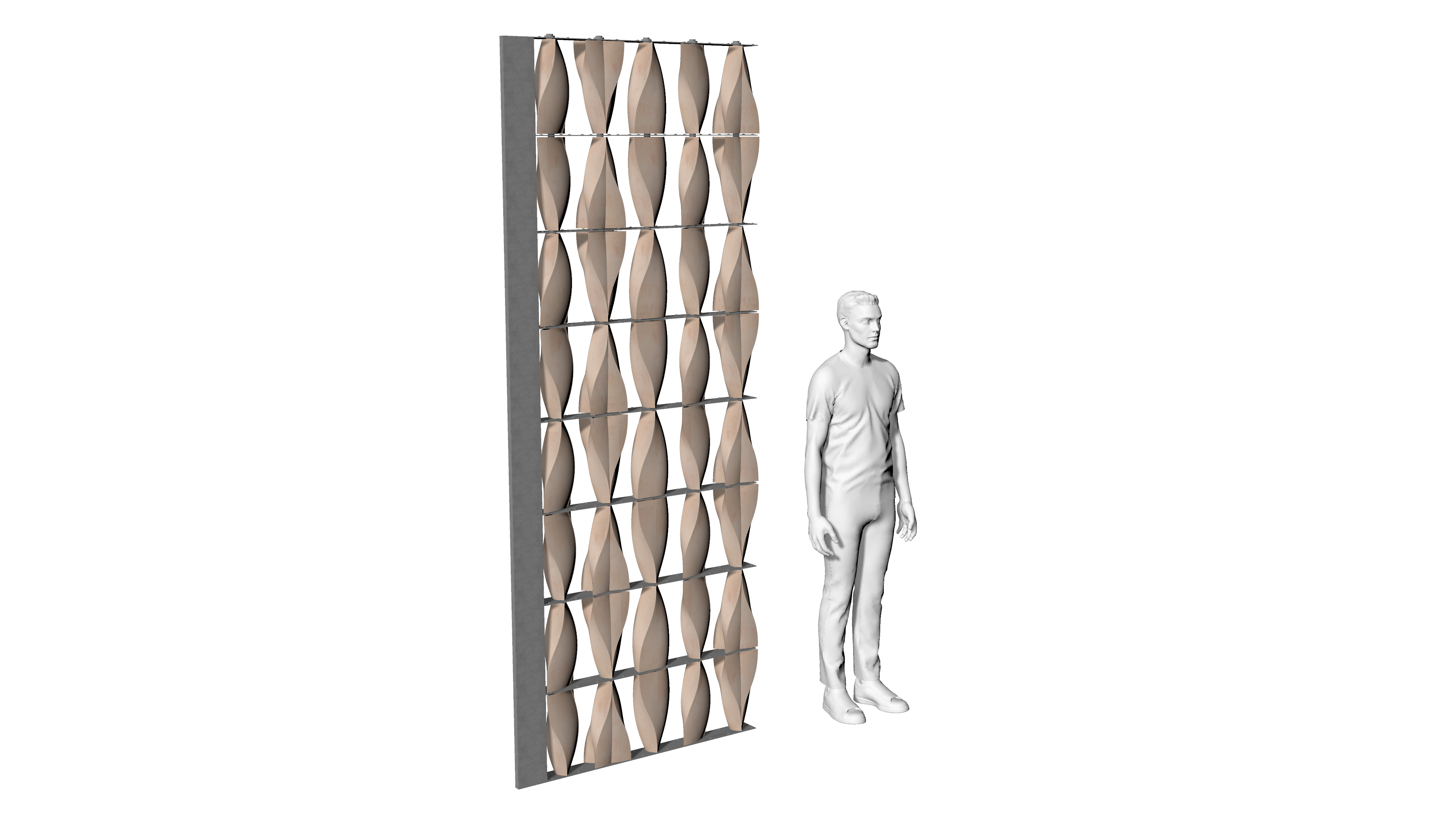
Renderings showcasing the final three ceramic modules aggregated at the scale of a human.
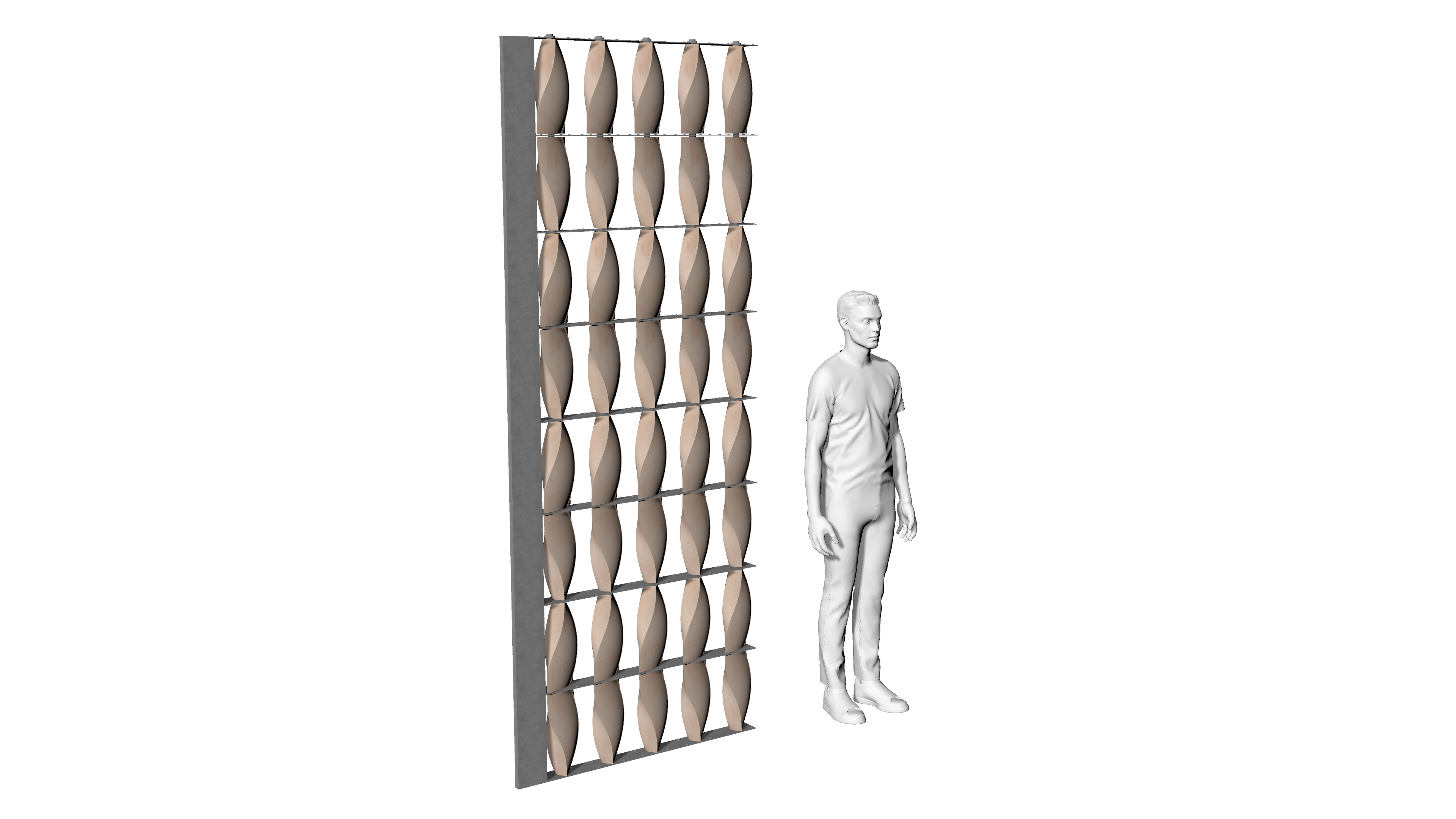
Renderings showcasing the final three ceramic modules aggregated at the scale of a human.
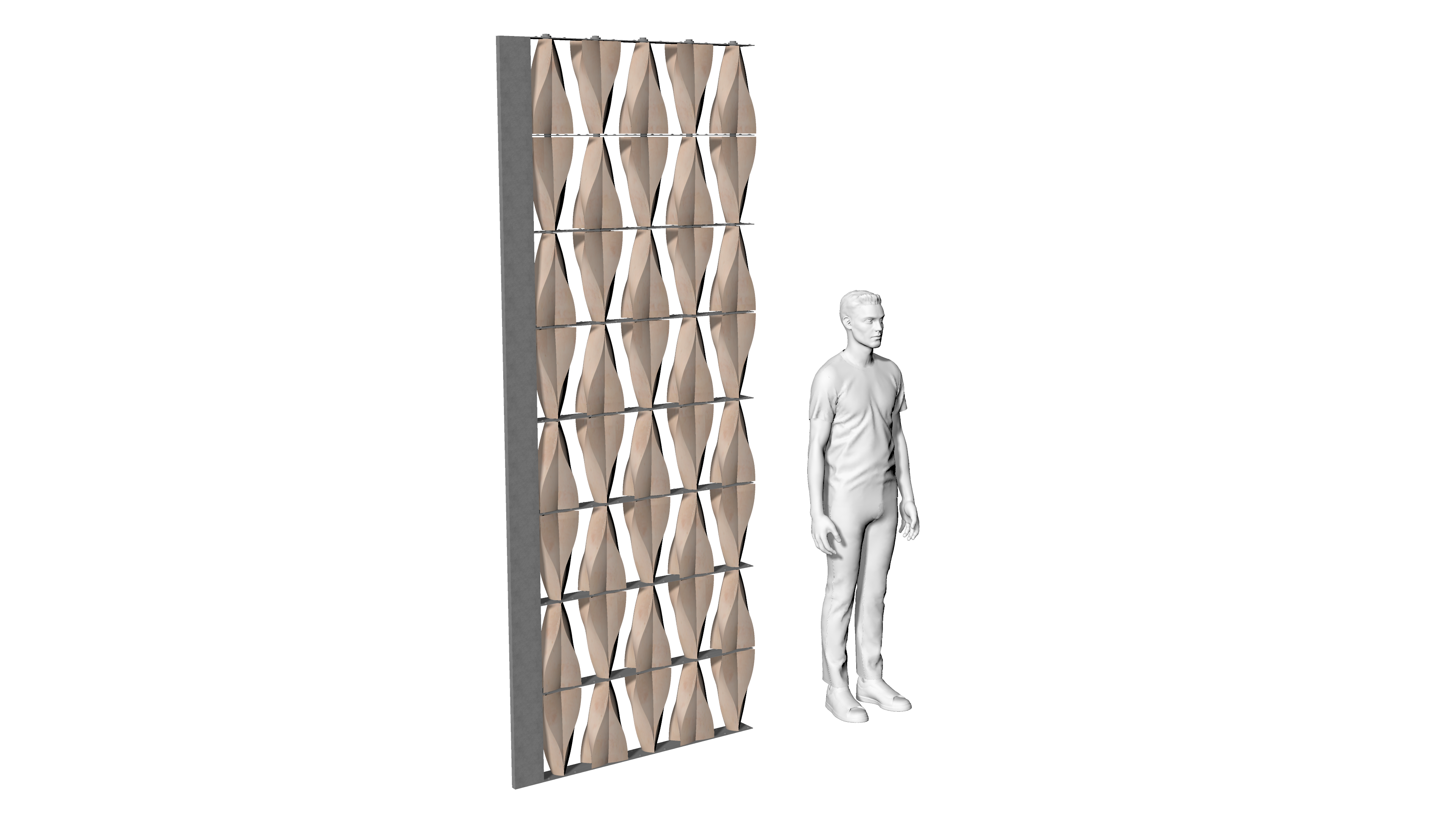
Renderings showcasing the final three ceramic modules aggregated at the scale of a human.
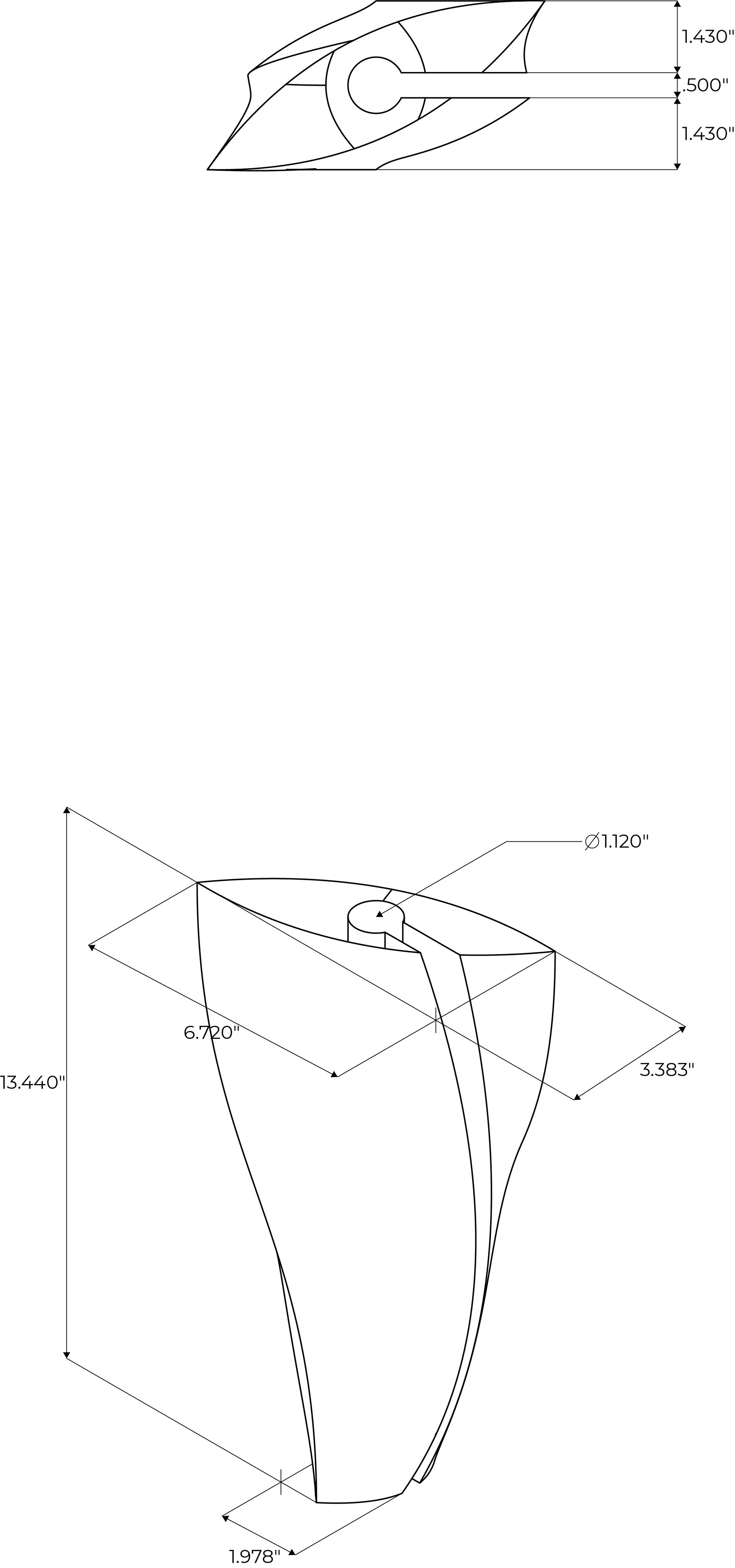
A dimension drawing of the final eye-shaped ceramic module.
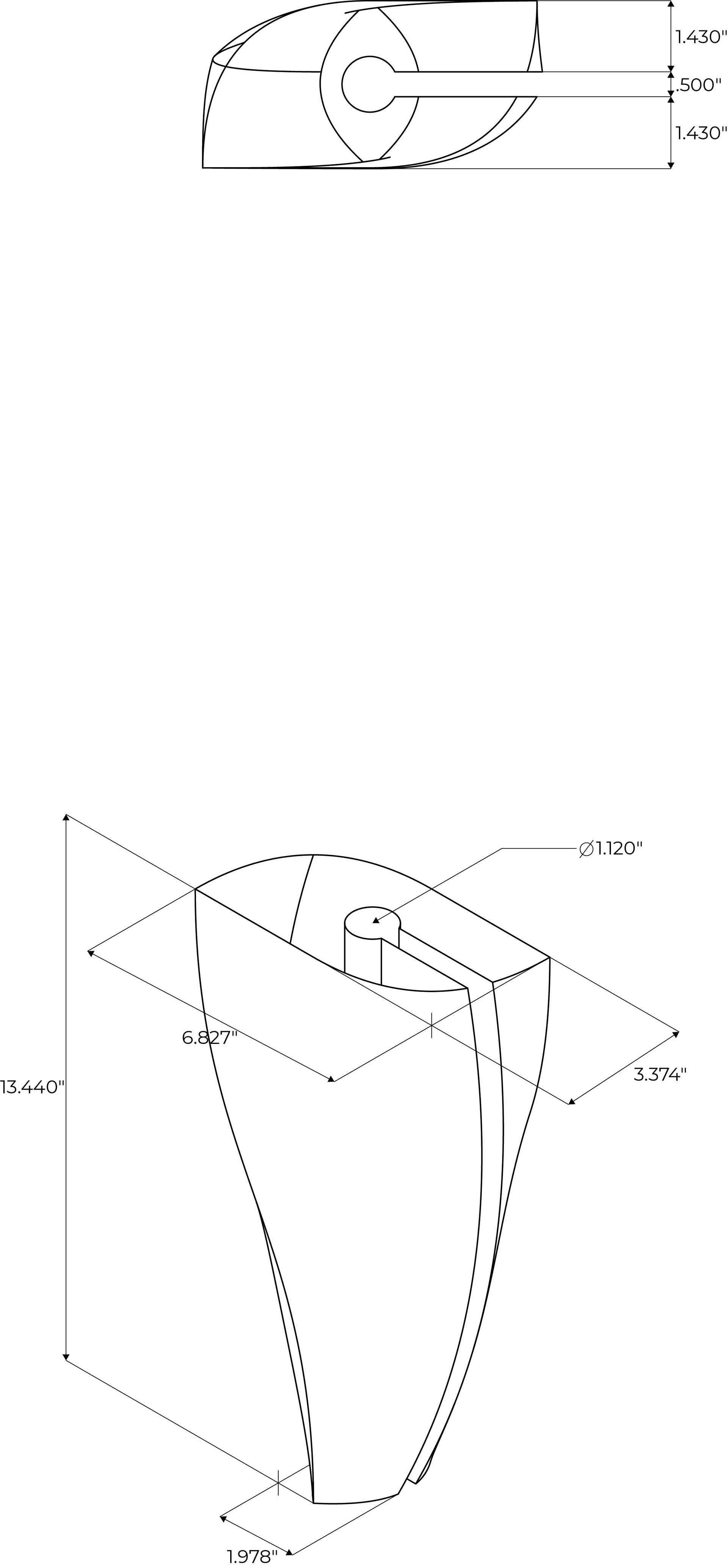
A dimension drawing of the final leaf-shaped ceramic module.
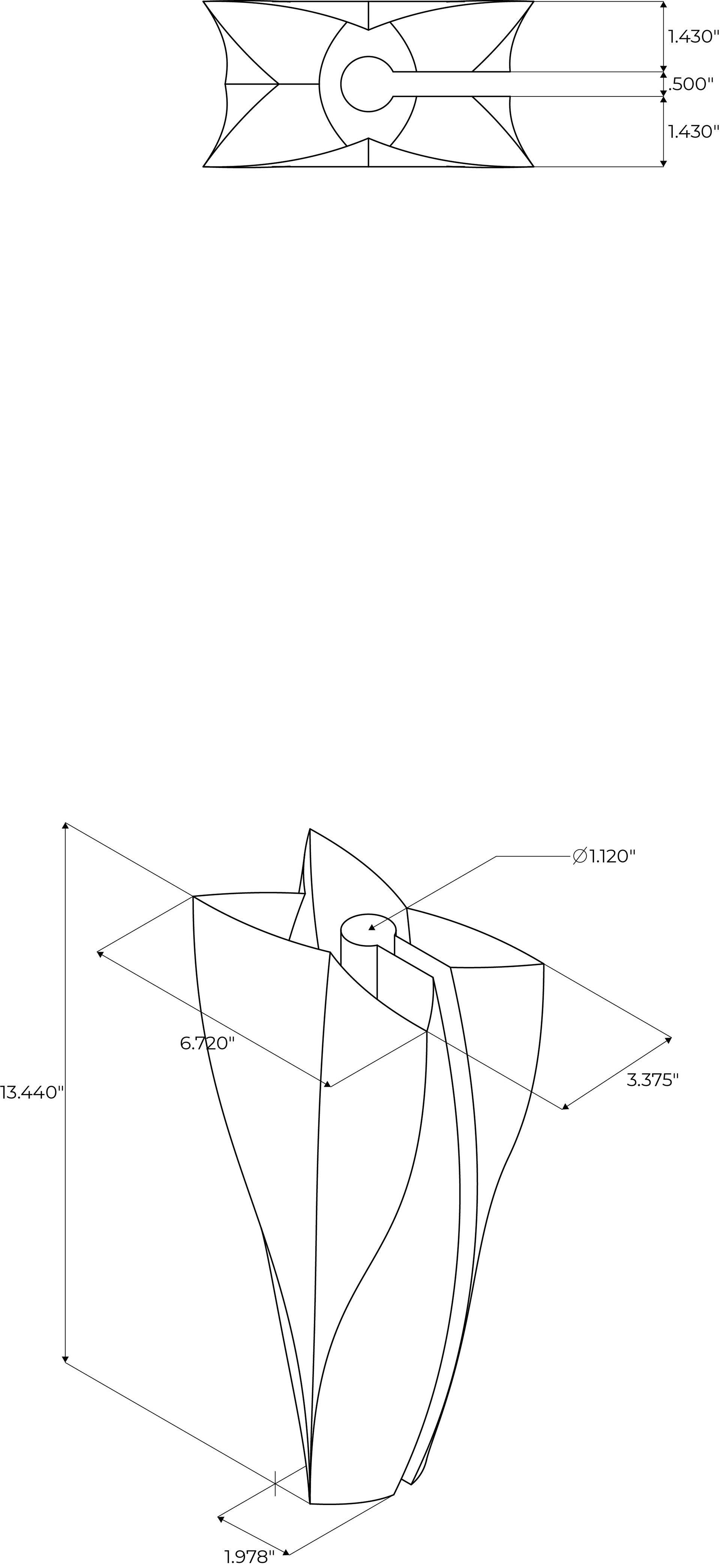
A dimension drawing of the final x-shaped ceramic module.
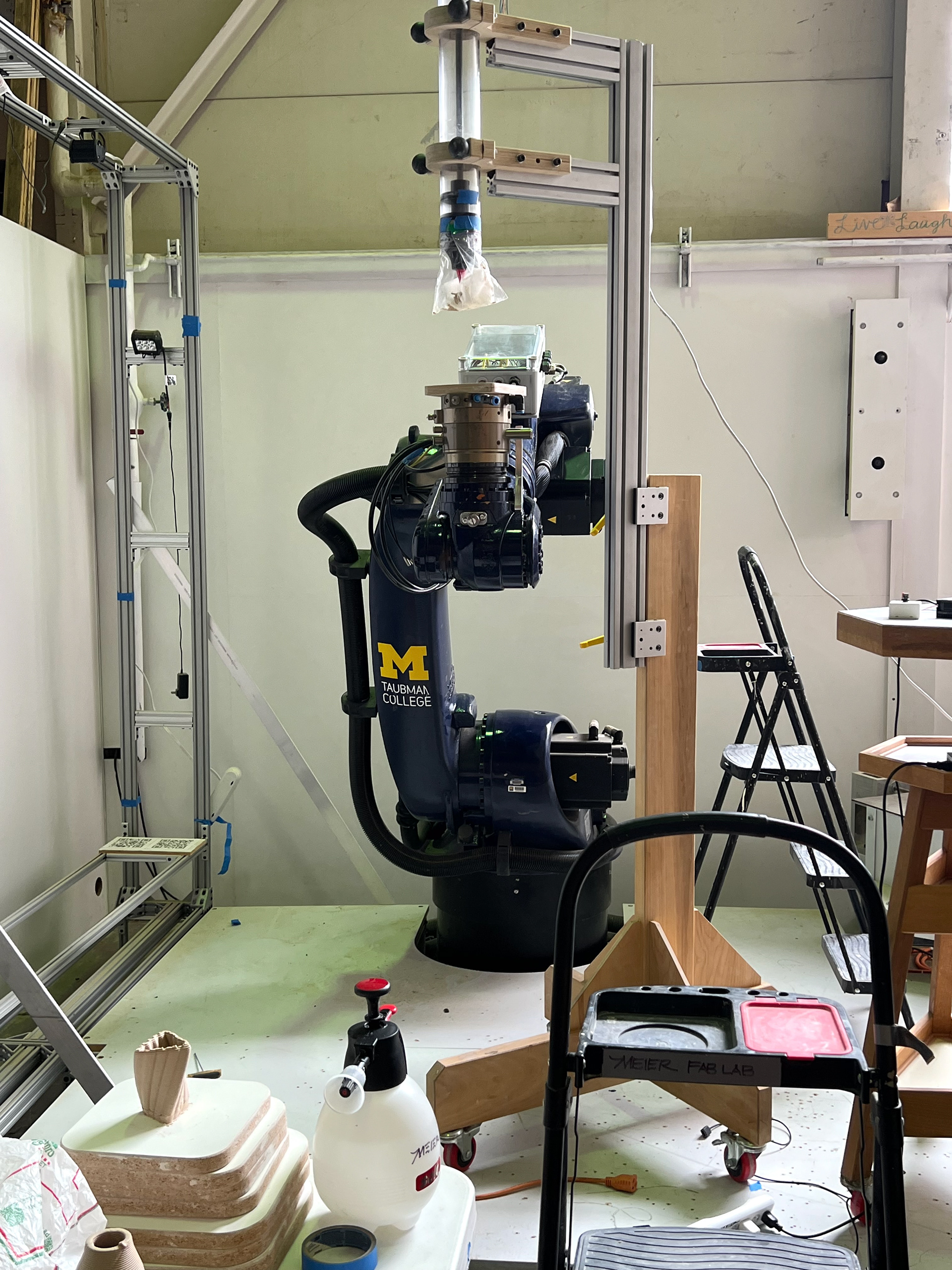
An image showcasing the robot setup for clay extrusion.
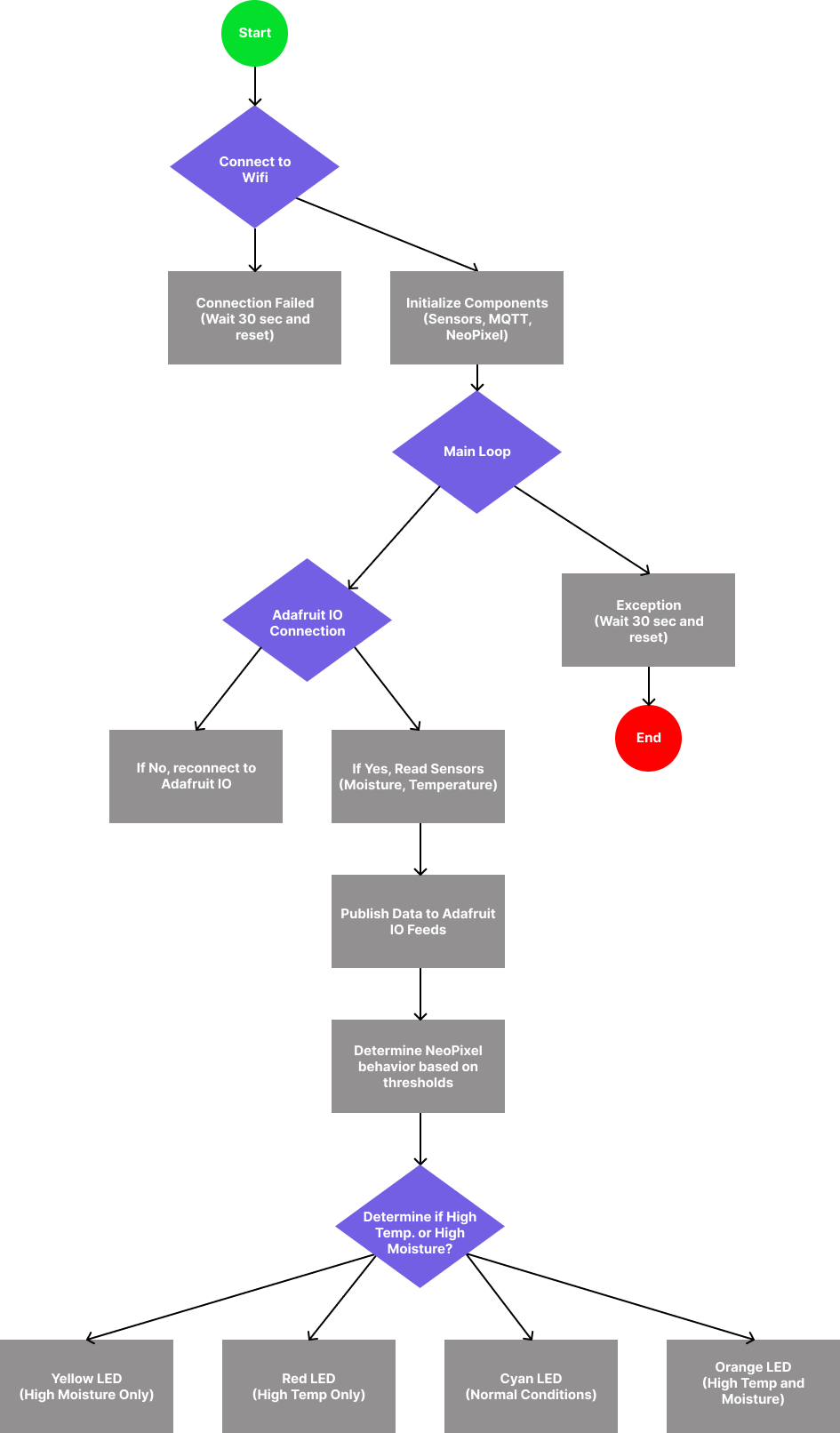
A flowchart of the code.

A concept sketch I made at the beginning of the project.
Aggregated Resistance (2024) Classwork. Instructors: Mark Meier, Chris Humphrey
This group project involves creating a modular indoor screen that responds to environmental factors such as temperature, occupancy, and light through integrated IoT sensors. The screen’s flexible design allows for reconfiguration and data collection on human movement and space conditions, providing real-time insights that inform design and safety decisions. Drawing inspiration from natural systems like coral reefs, the screen serves as a dynamic, data-driven tool, ideal for public venues, protest areas, and evolving construction sites, where it can help ensure safety and optimize spatial configurations.
My roles included: form generation (final and initial iterations), CNC milling (base), Internet of Things integration, Python coding, assembly of the electronic components.
My roles included: form generation (final and initial iterations), CNC milling (base), Internet of Things integration, Python coding, assembly of the electronic components.
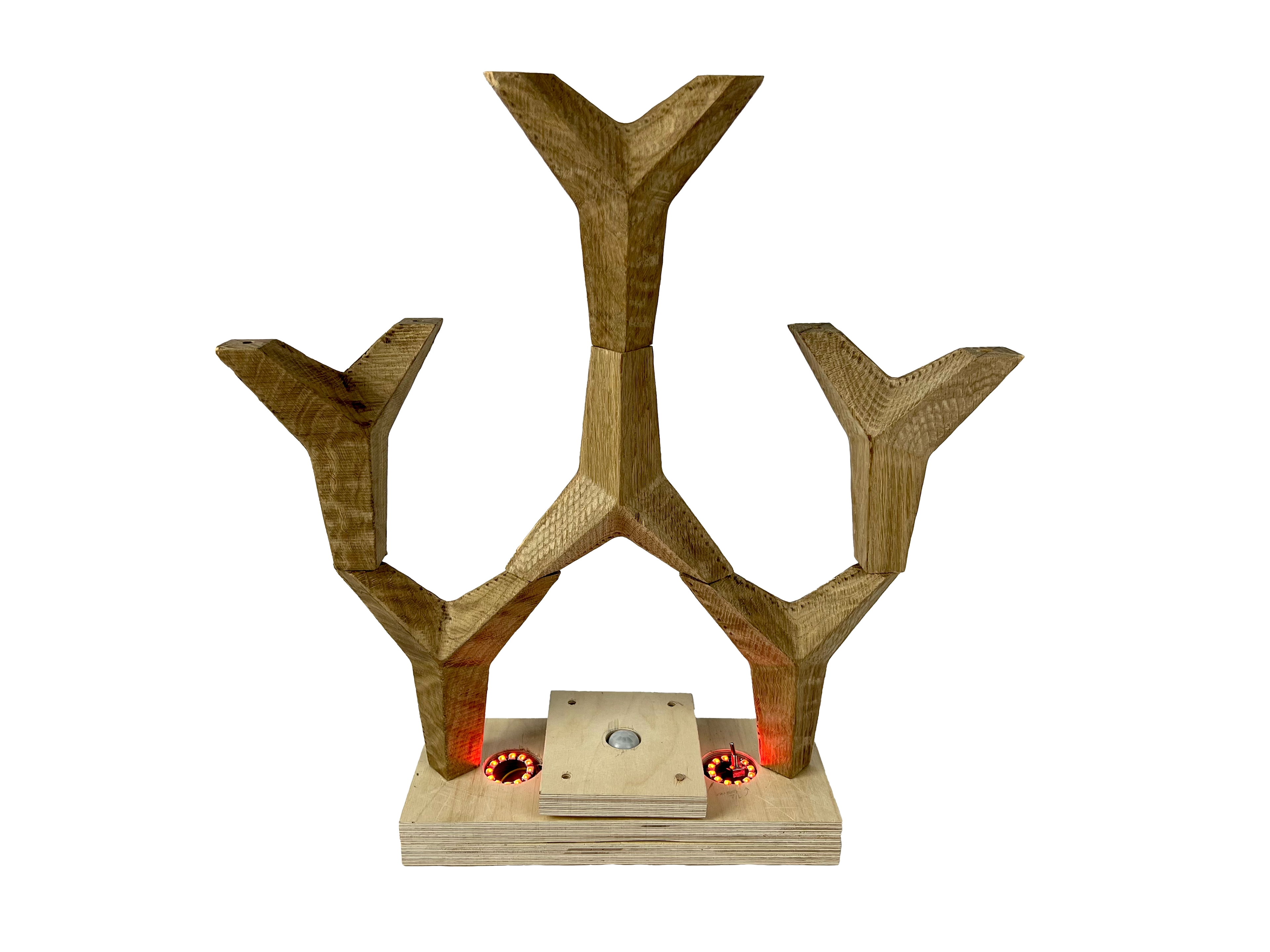
Module screen aggregation model with Internet of Things Adafruit integrated base.

Exploded Axonometric view of the final assembly showcasing the base and integrated electronics.

CNC Milled Plywood Test Version

Finalized CNC Milled Brazilian Cherry "Toy" Module

Exploded mortise and tenon connection diagram showing module to module connection.
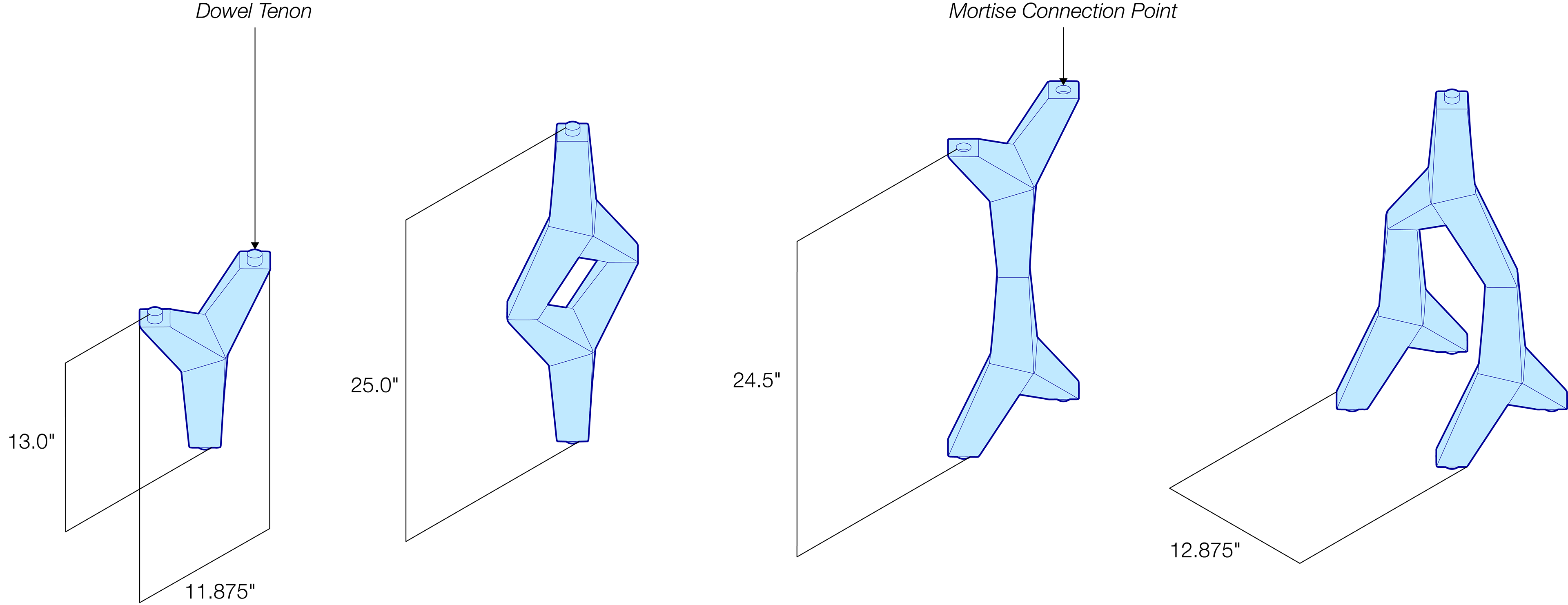
Various arrangements of module to module connection afforded by mortise and tenon connections.
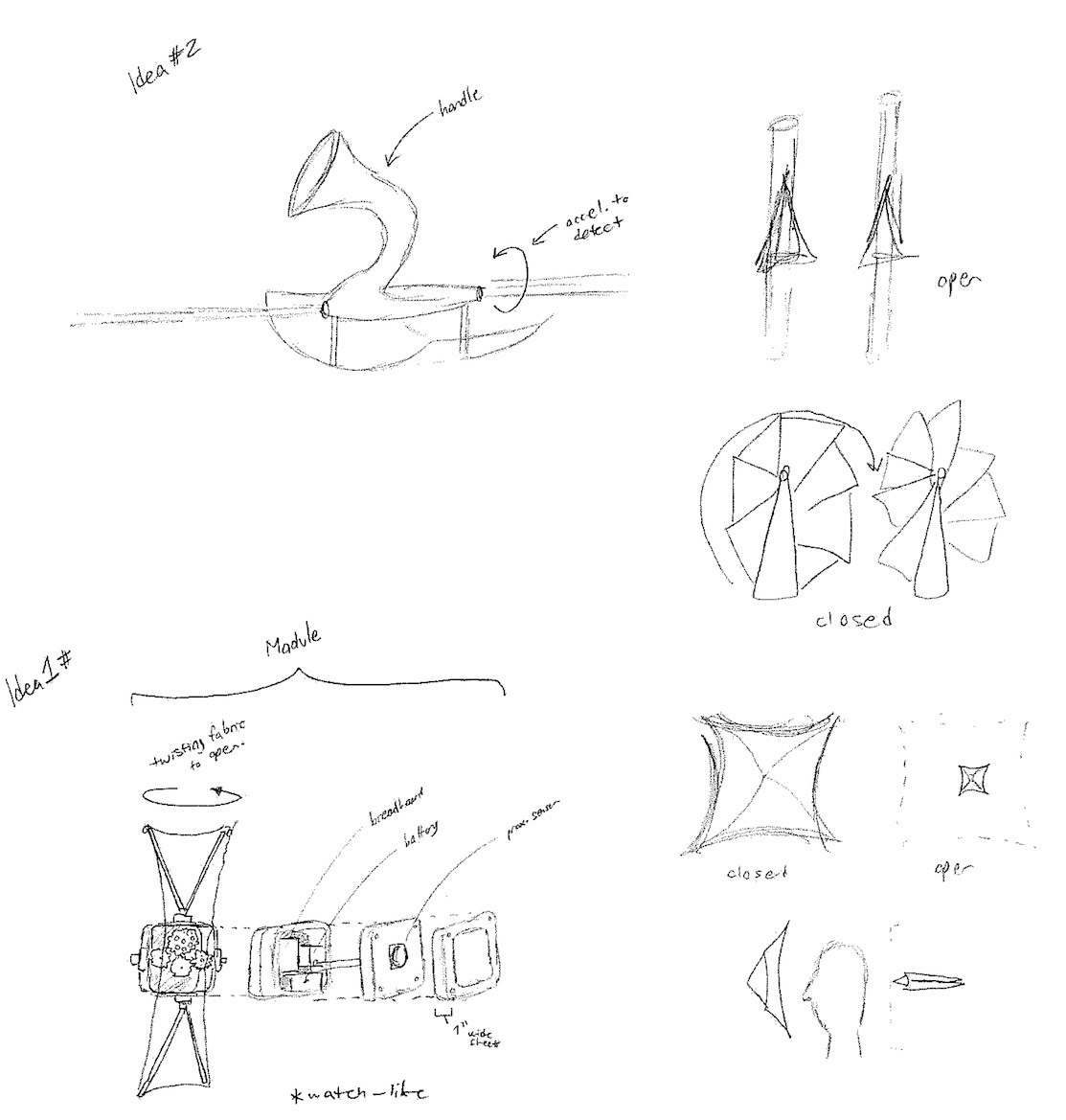
Initial project concept sketches for the modular screening device.
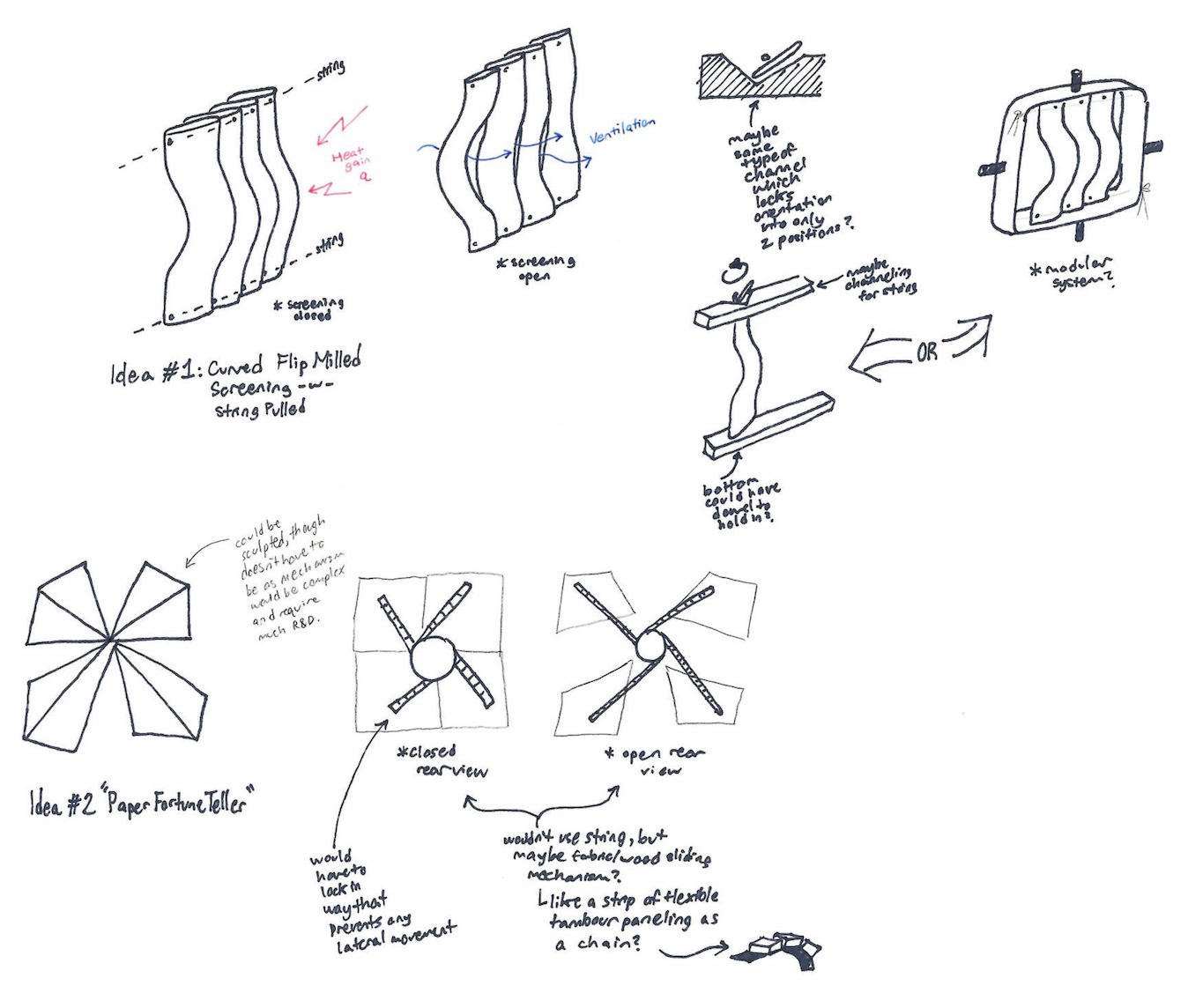
Initial project concept sketches for the modular screening device.

Initial project concept sketches for the modular screening device.
Material Change (2024) Classwork. Instructor(s): Mark Meier, Chris Humphrey
The object features a central spine that serves as both a structural and lighting element, with delicate front wings and larger rear wings that capture and reflect light dynamically. The spine conceals the light source, allowing illumination only from the sides to enhance the mystery of its origin. Despite being made from solid 18-gauge steel, the varied wings and perforated surfaces create a sense of weightlessness, further emphasized by dramatic shadows. Metalworking techniques like bending, spot welding, and fine detailing, combined with Circuit Python-controlled lighting, elevate the interplay of light, shadow, and form. Link to video showcase.
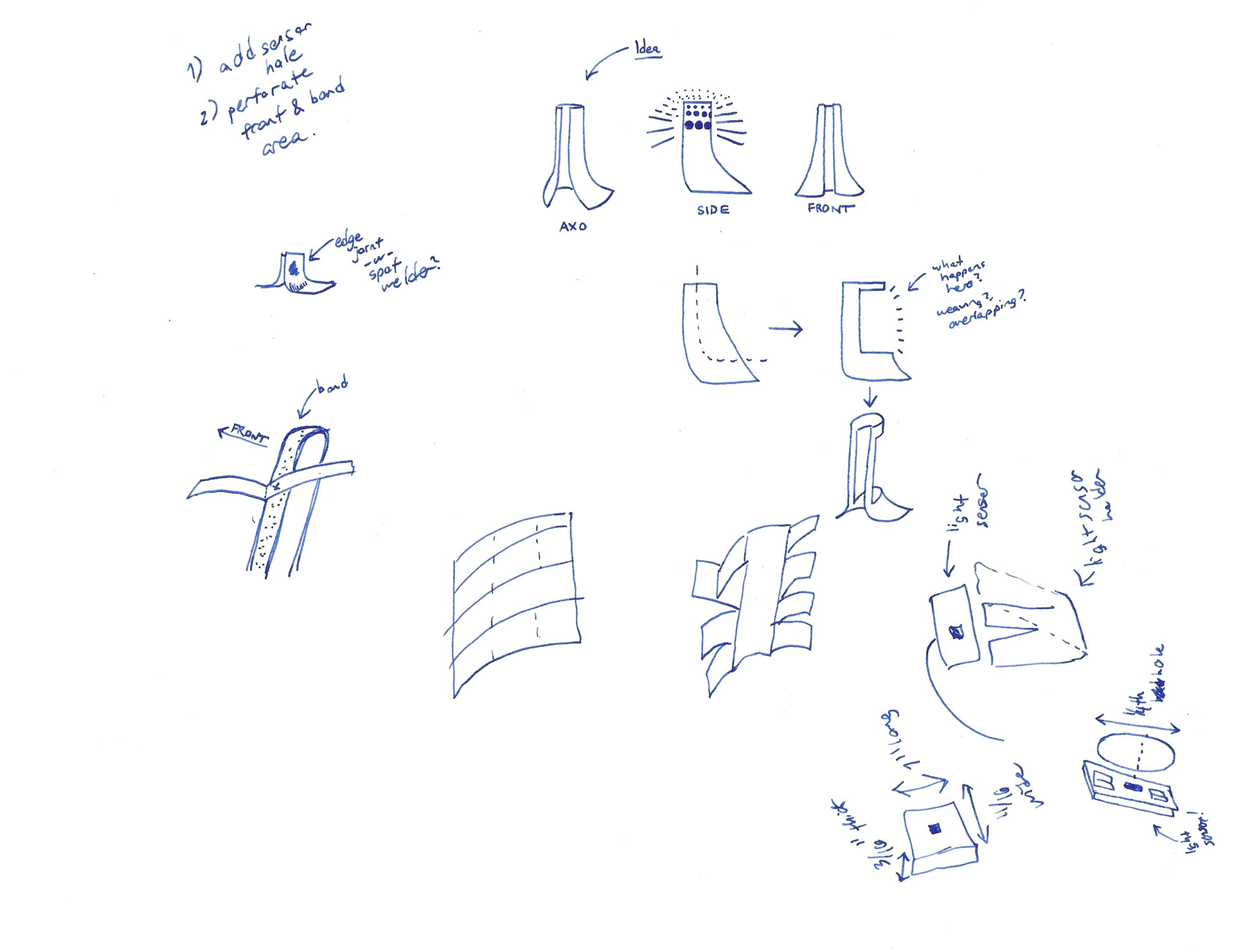
Preliminary sketches.
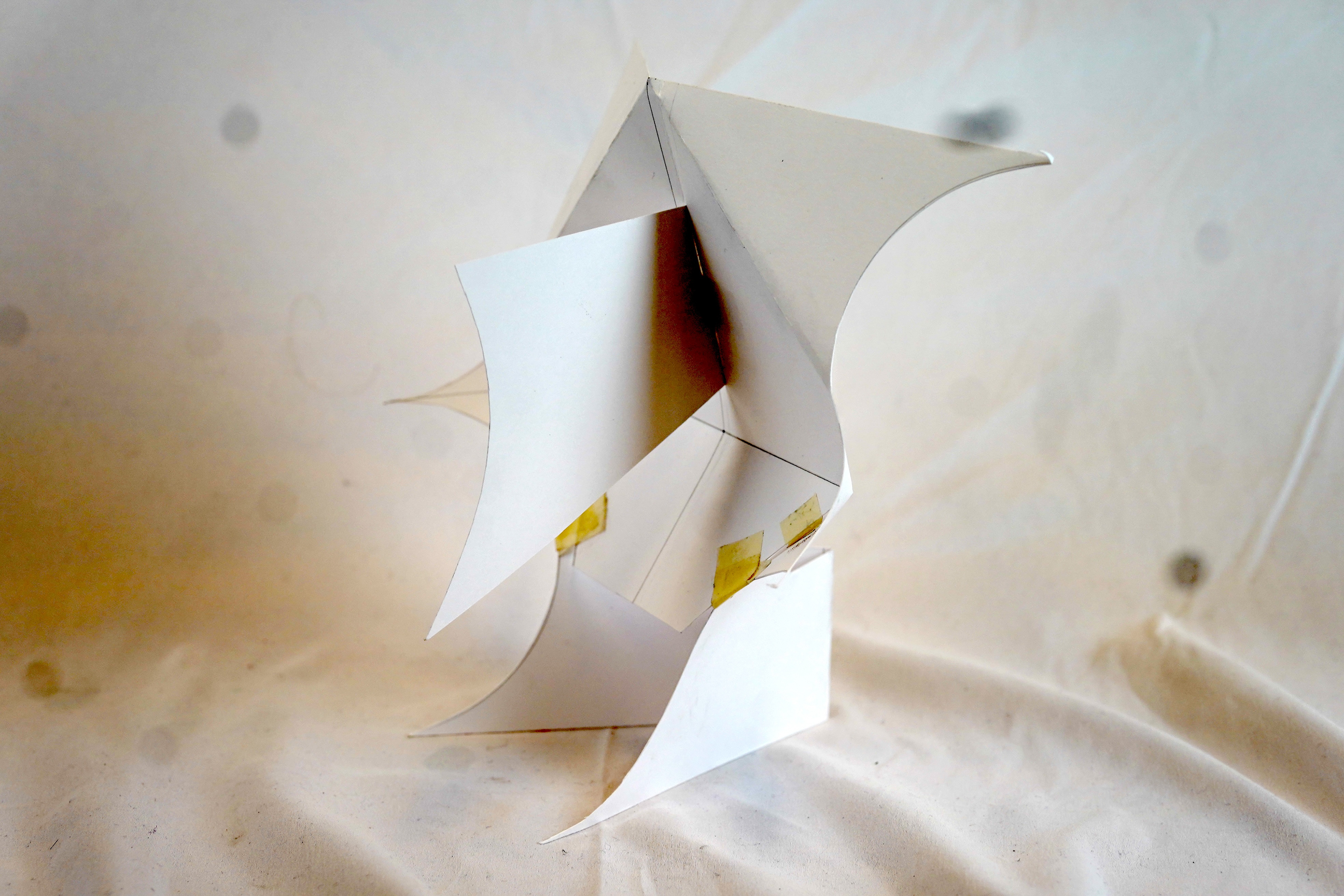
Preliminary paper design mockup.

Exploded Axonometric View
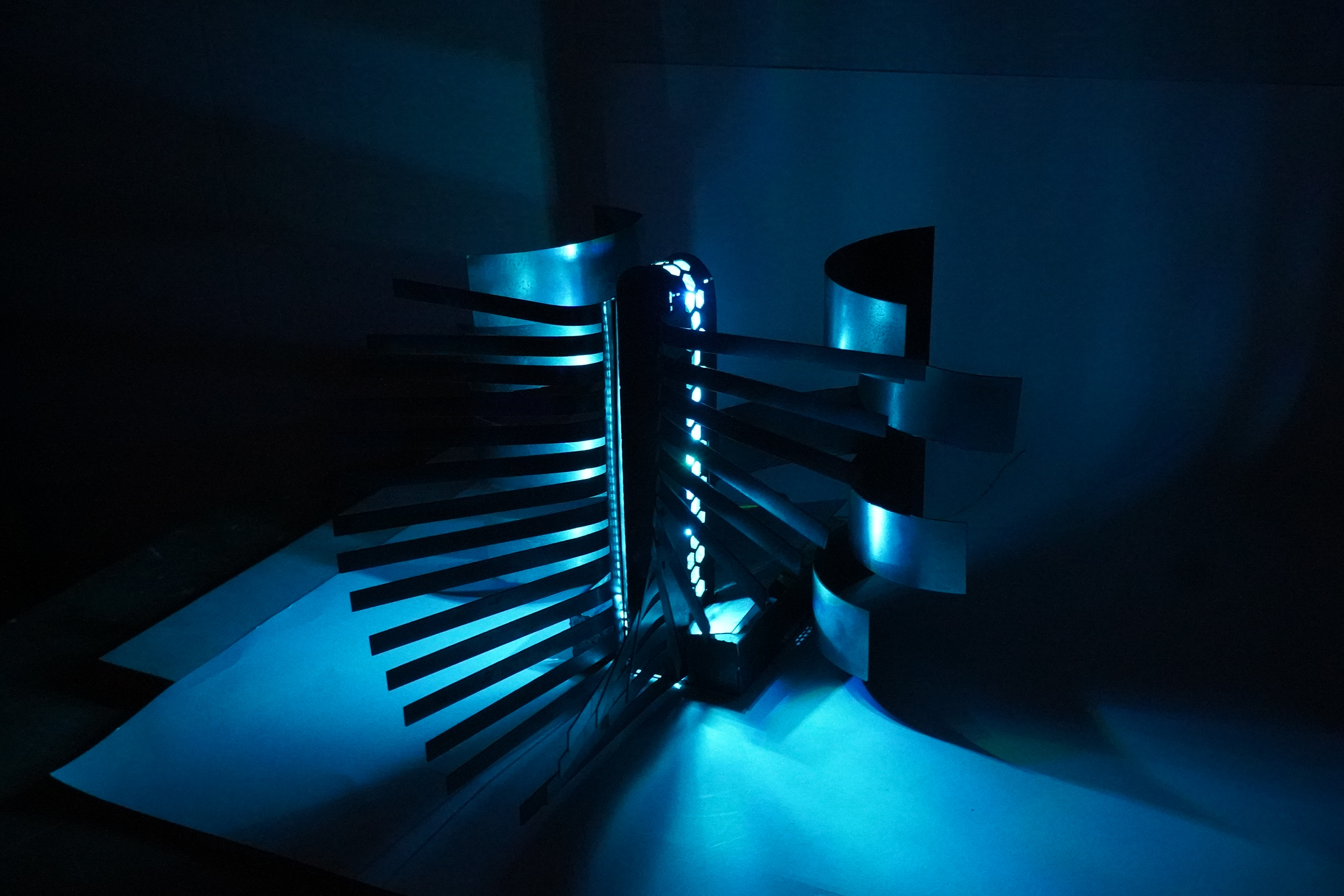
Still of the lighting and shadow effects achieved by the design.

Close up shot of the form and lighting.

Still of the cast shadows generated by the object's form.
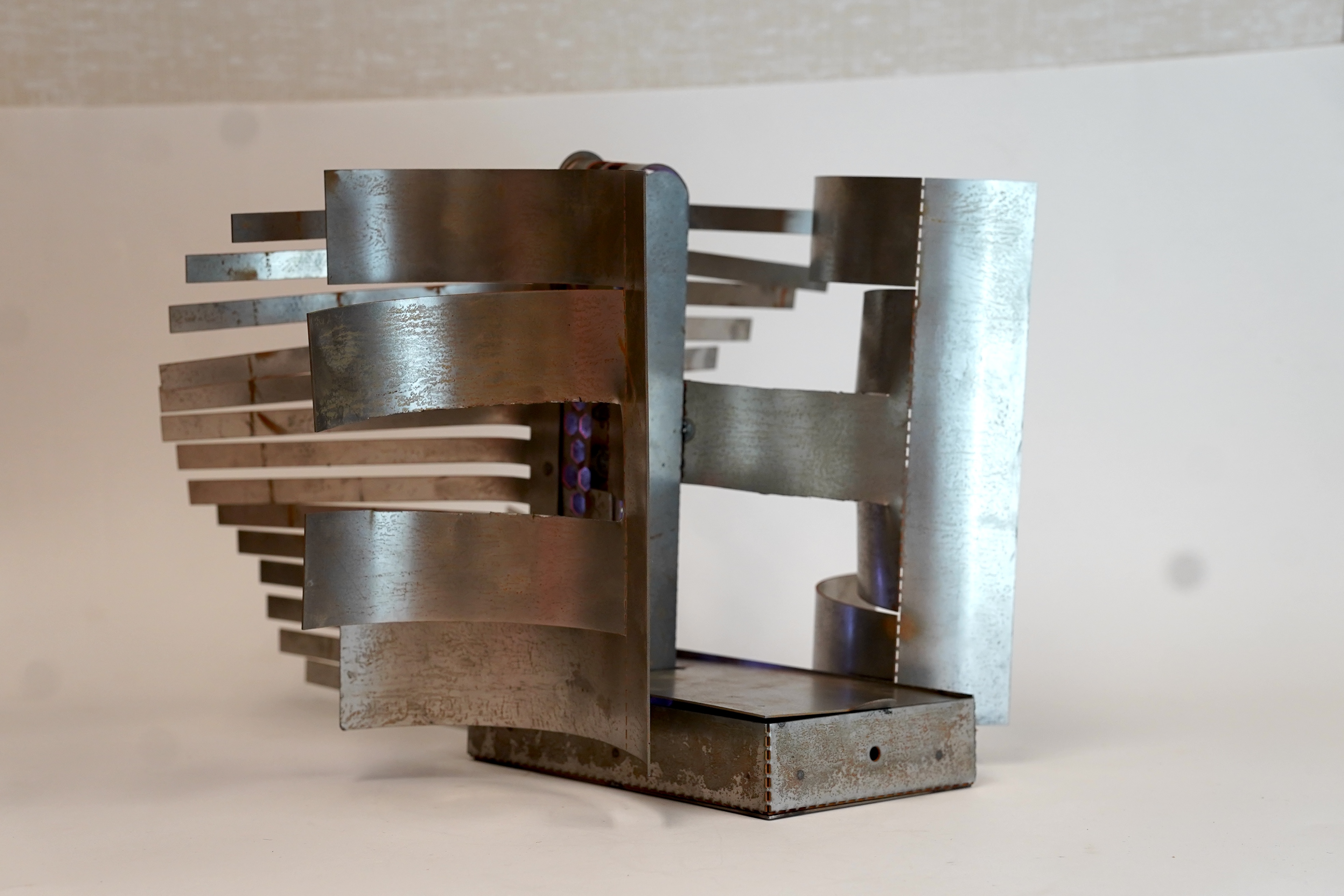
Shot of the form without lighting.
Interluma (2024) Classwork. Instructor(s): Mark Meier, Chris Humphrey
This project explores the intersection of light, material, and computation through a light-responsive, sensory device crafted from frosted PETG material. The form houses an Adafruit ESP32 microcontroller, breadboard, toggle switch, lithium-ion battery, accelerometer, and an LED strip. The device utilizes custom Python code developed in CircuitPython for MuEditor, allowing it to detect user movement and orientation, with dynamic color shifts responding to these inputs. Link to video showcase.

Image still showcasing the object's color and formal qualities.

Image still showcasing the object's color and formal qualities.
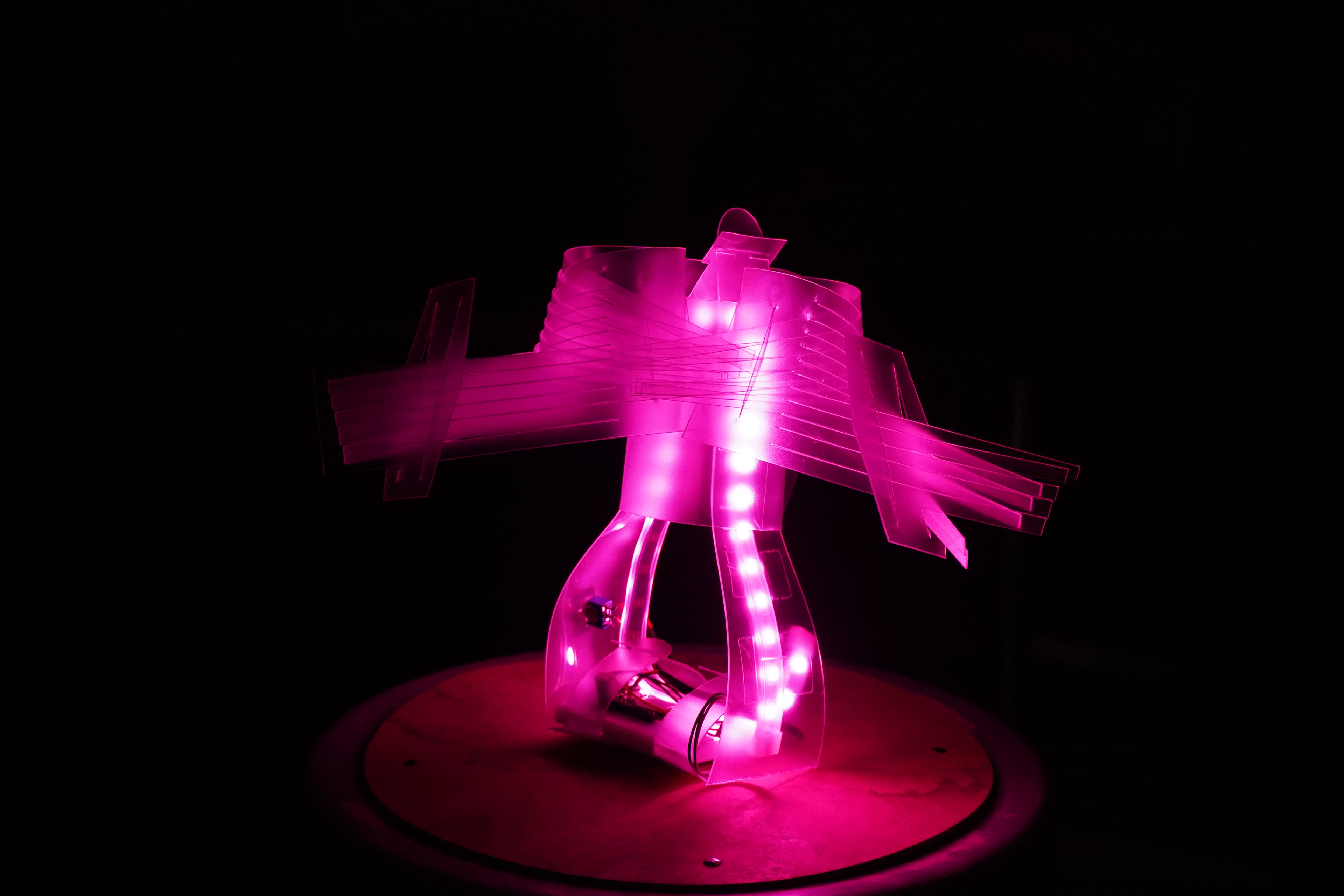
Image still showcasing the object's color and formal qualities.
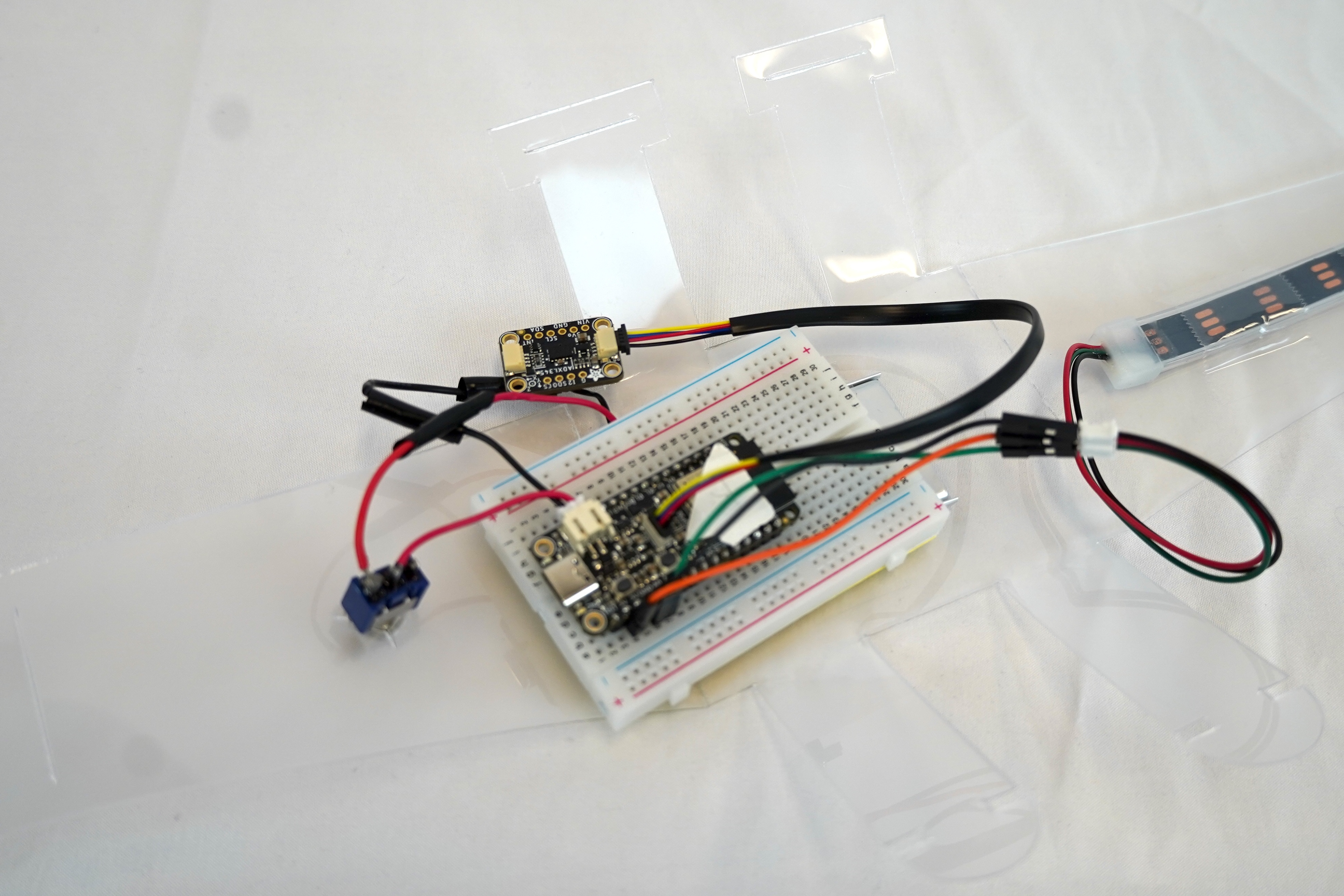
Close up view of the internal components. (Left to right: Toggle Switch, Accelerometer, Microcontroller, 400 Pin Breadboard, LED strip).
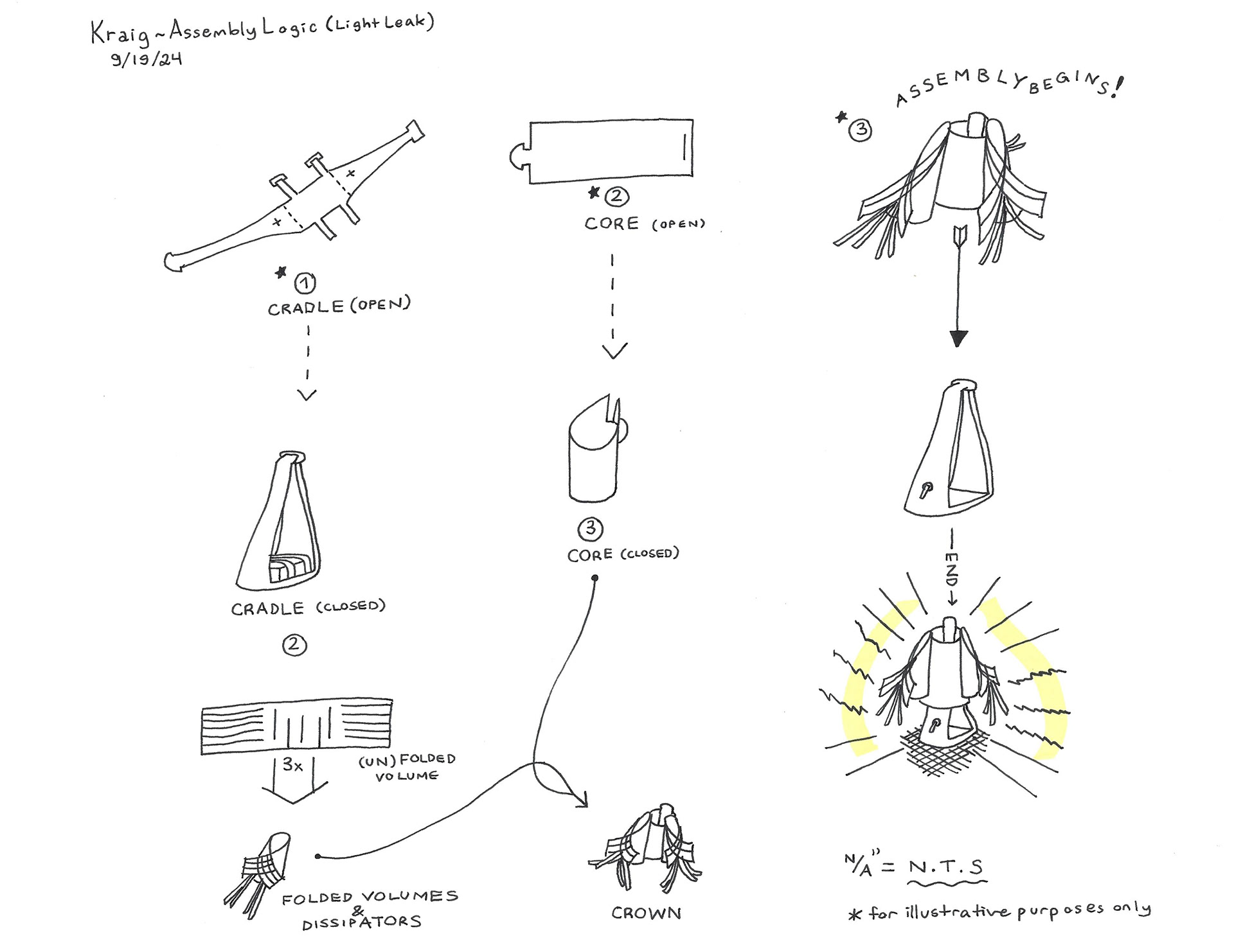
Hand sketch showing the assembly process of the form.
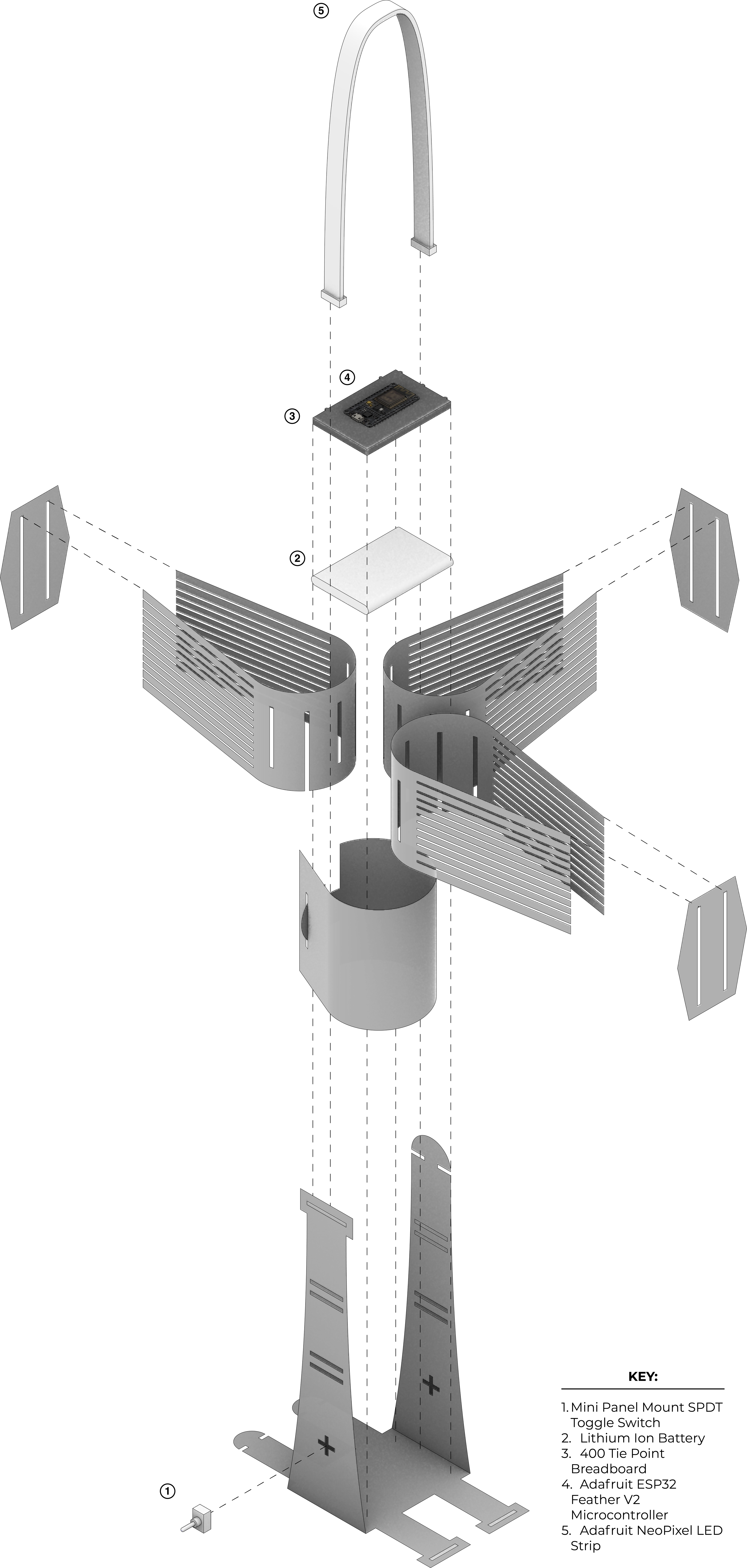
Exploded axonometric view of the components.
Enclosure Totem (2019) Classwork. Instructor: Nicole Beattie.
This project titled “Enclosure”, is project with the goal of creating a restrictive space. In the ABS-plastic mock-up, one can see that sculpture is designed to surround the 75% of the viewer’s line of sight, while leaving a smaller viewing angle through which forced perspective is created. The proof of concept 2’x1’x7’ model is made of housing insulation foamboard.

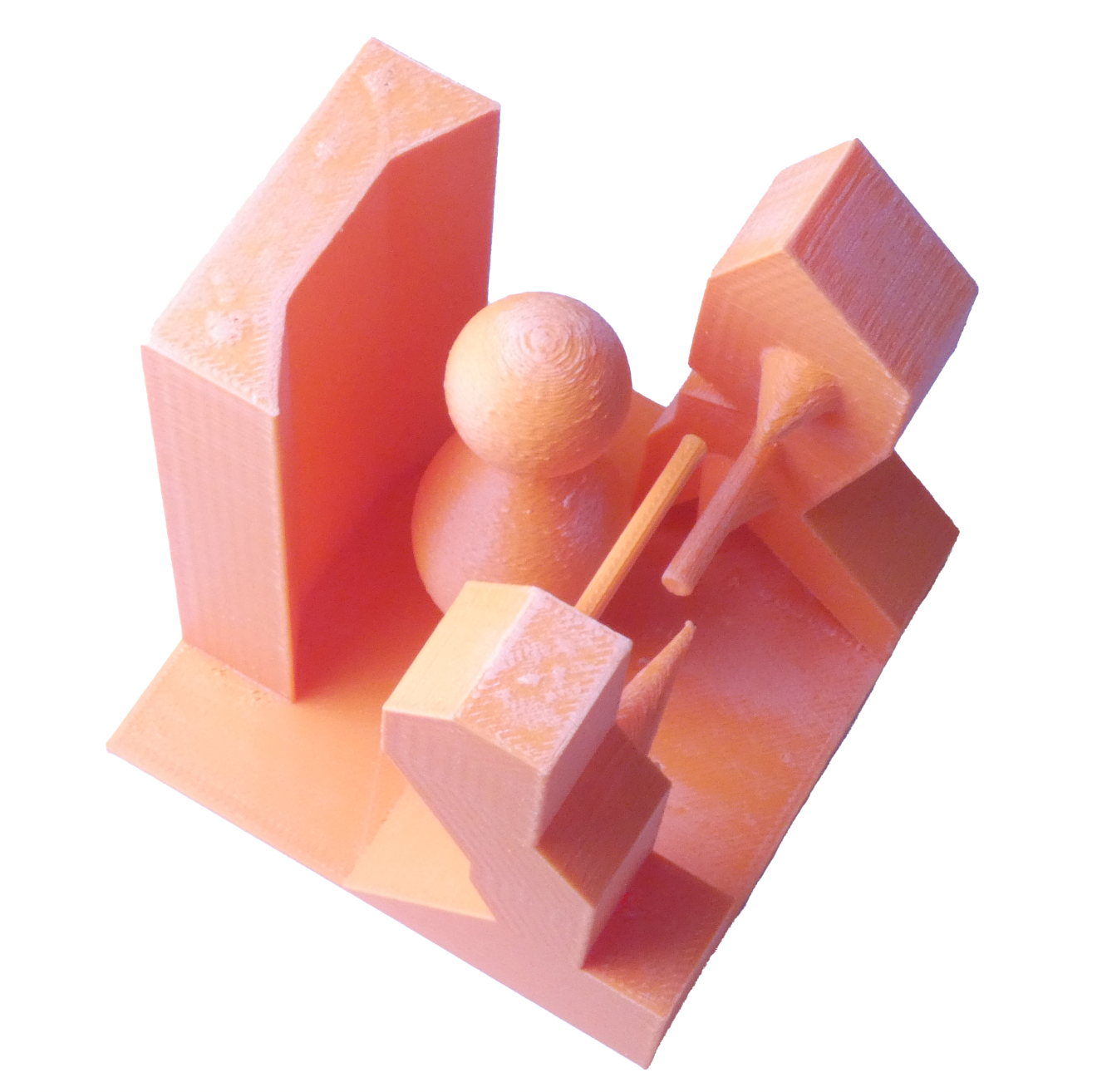
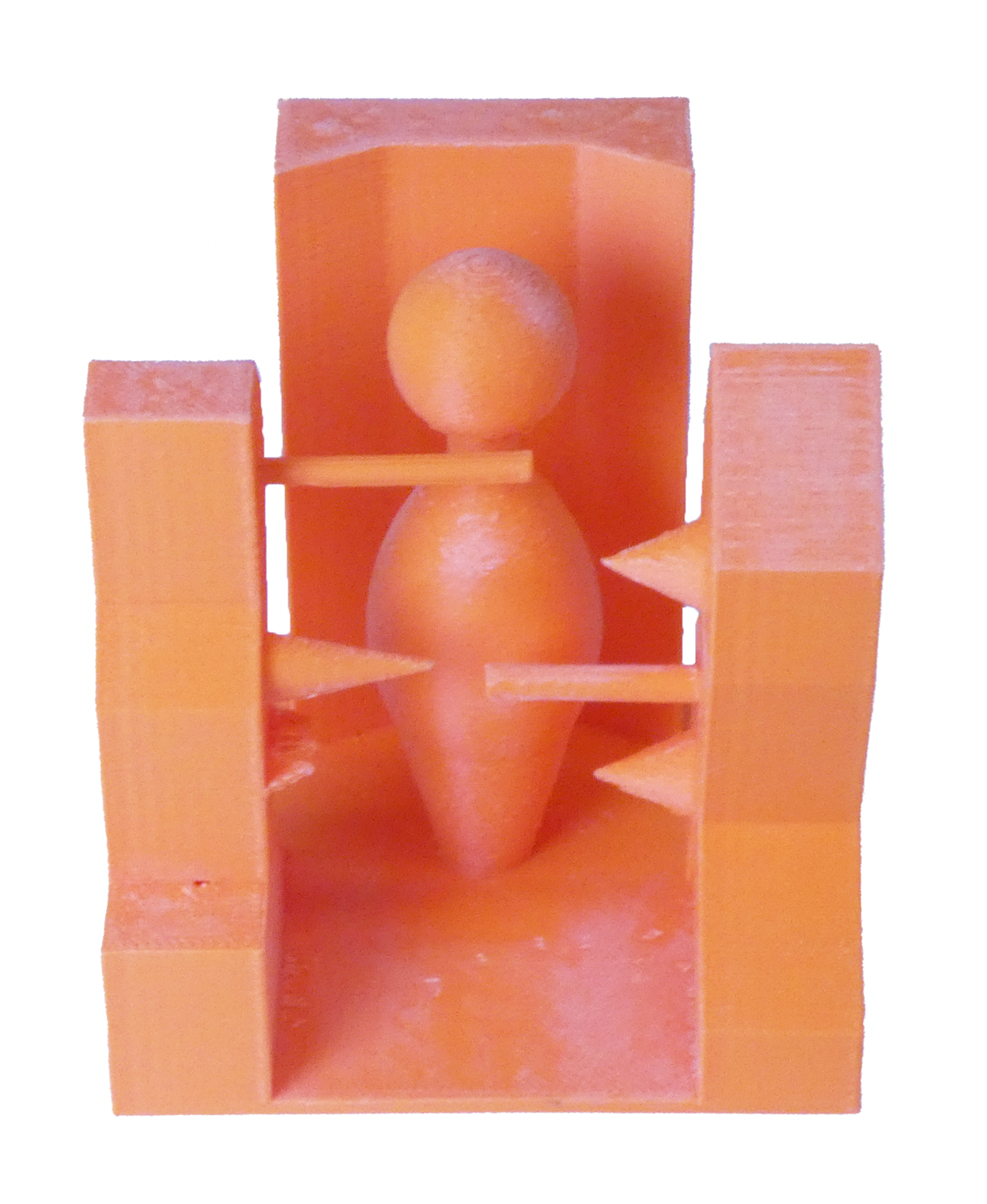
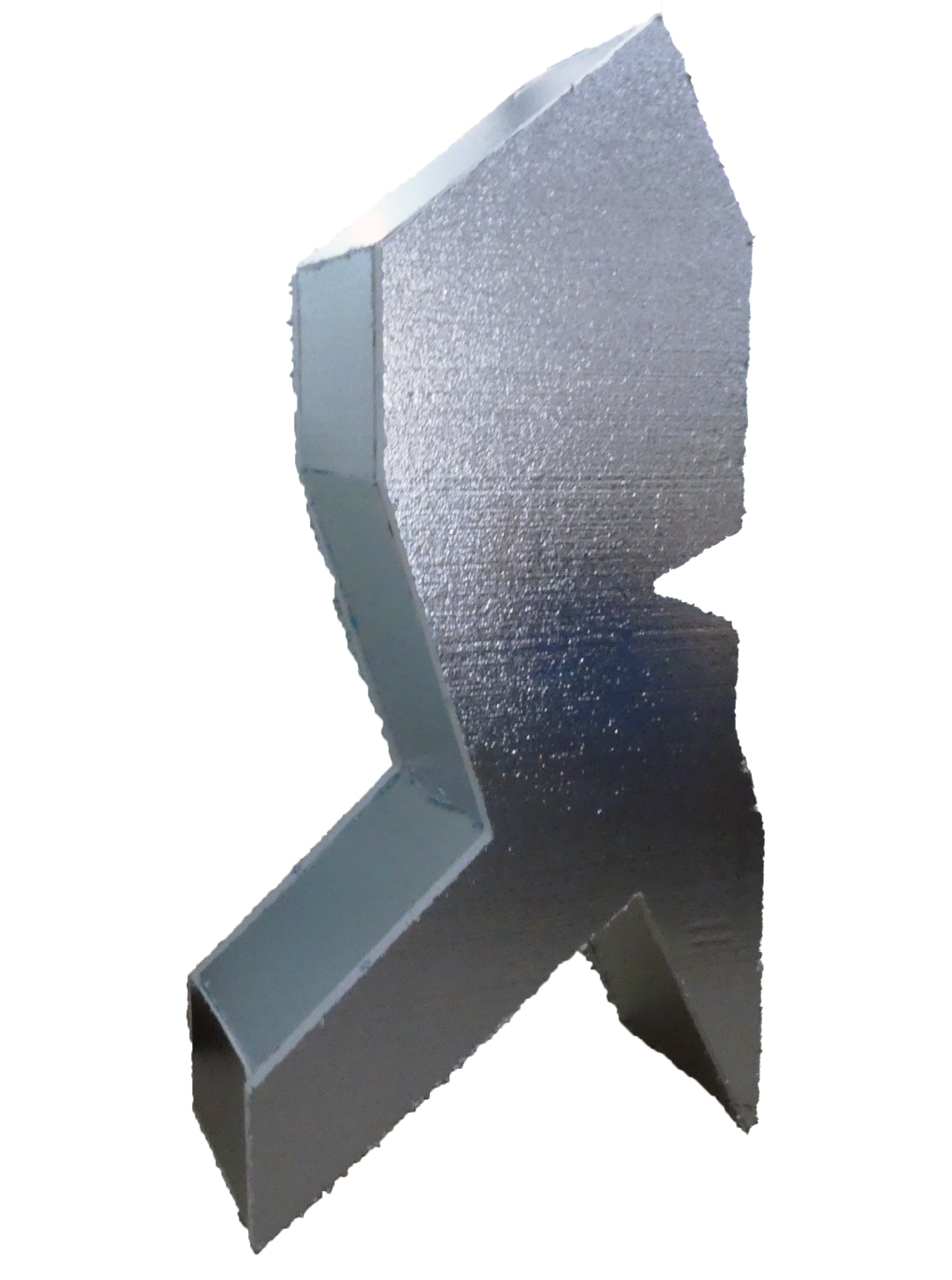
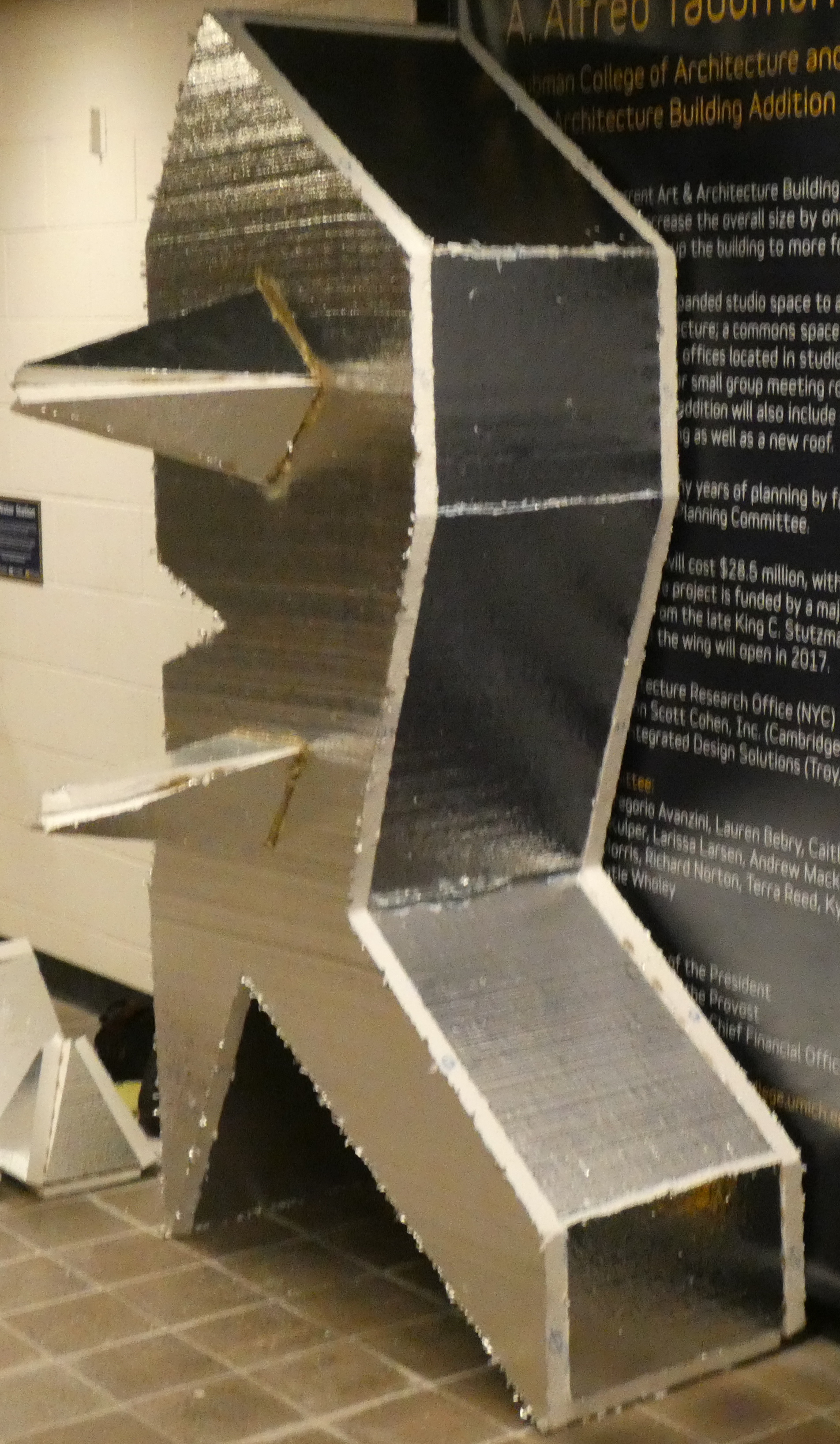
Go Away (2019) Classwork. Instructor: Nicole Beattie.
This project, titled "Go Away" is responding to the prompt of creating an object that elicits the emotion of anxiety. The piece is approximately 1.5’x3’x2', and is made entirely of reclaimed wood.
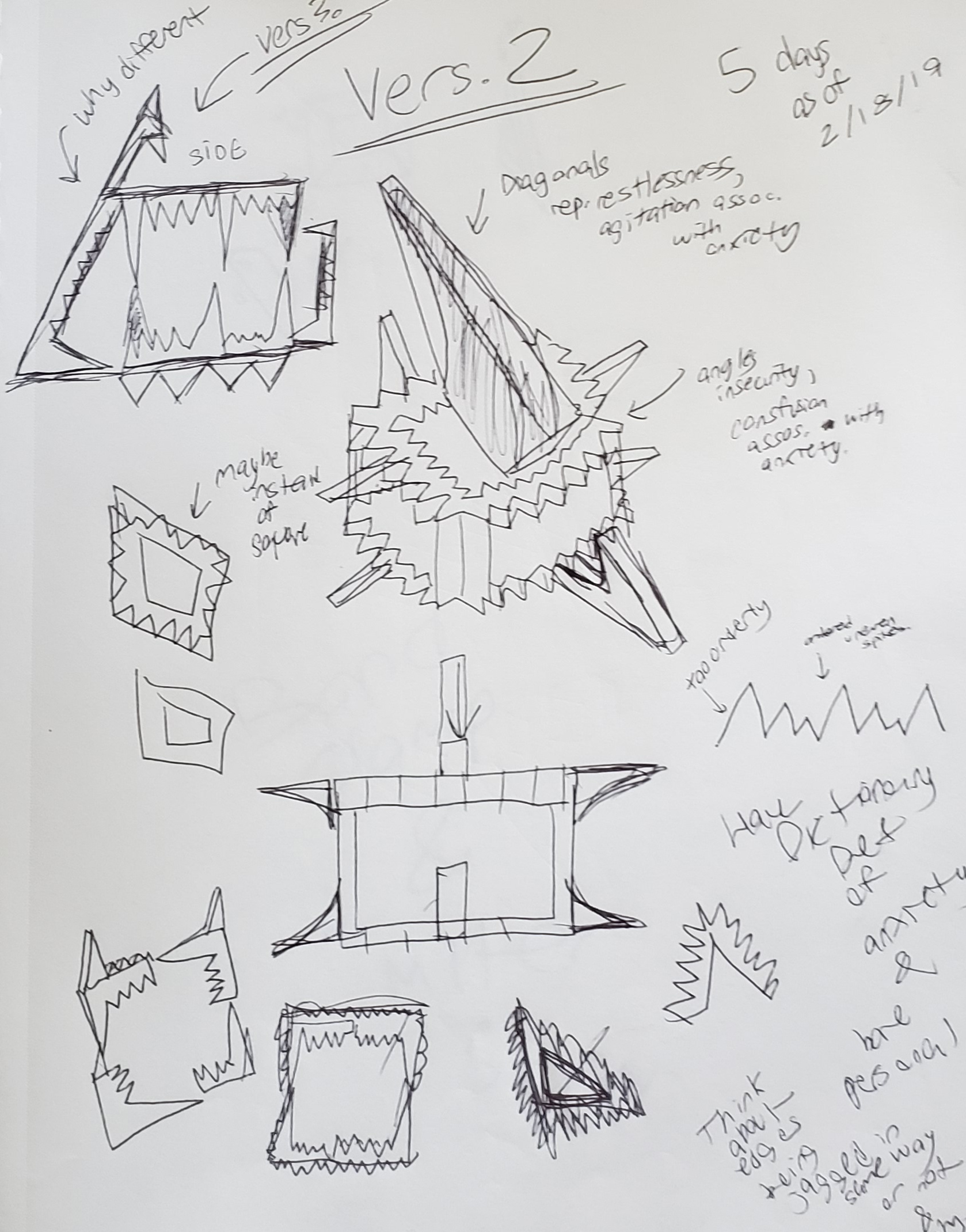
Process Sketching of the Anxiety Model before fabrication.
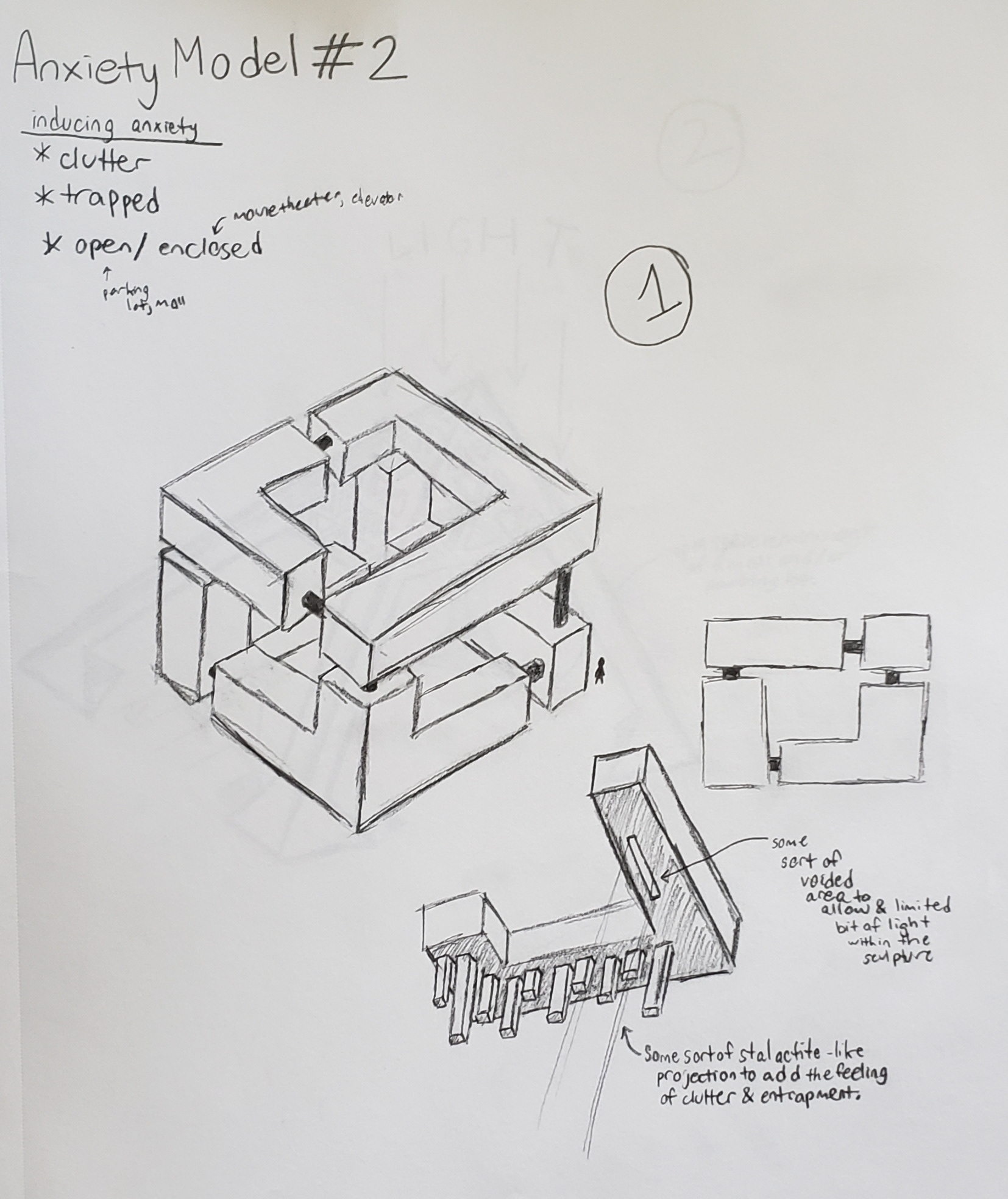
Alternate anxiety model sketch.

Dimension sketches for initial V2 Anxiety model.
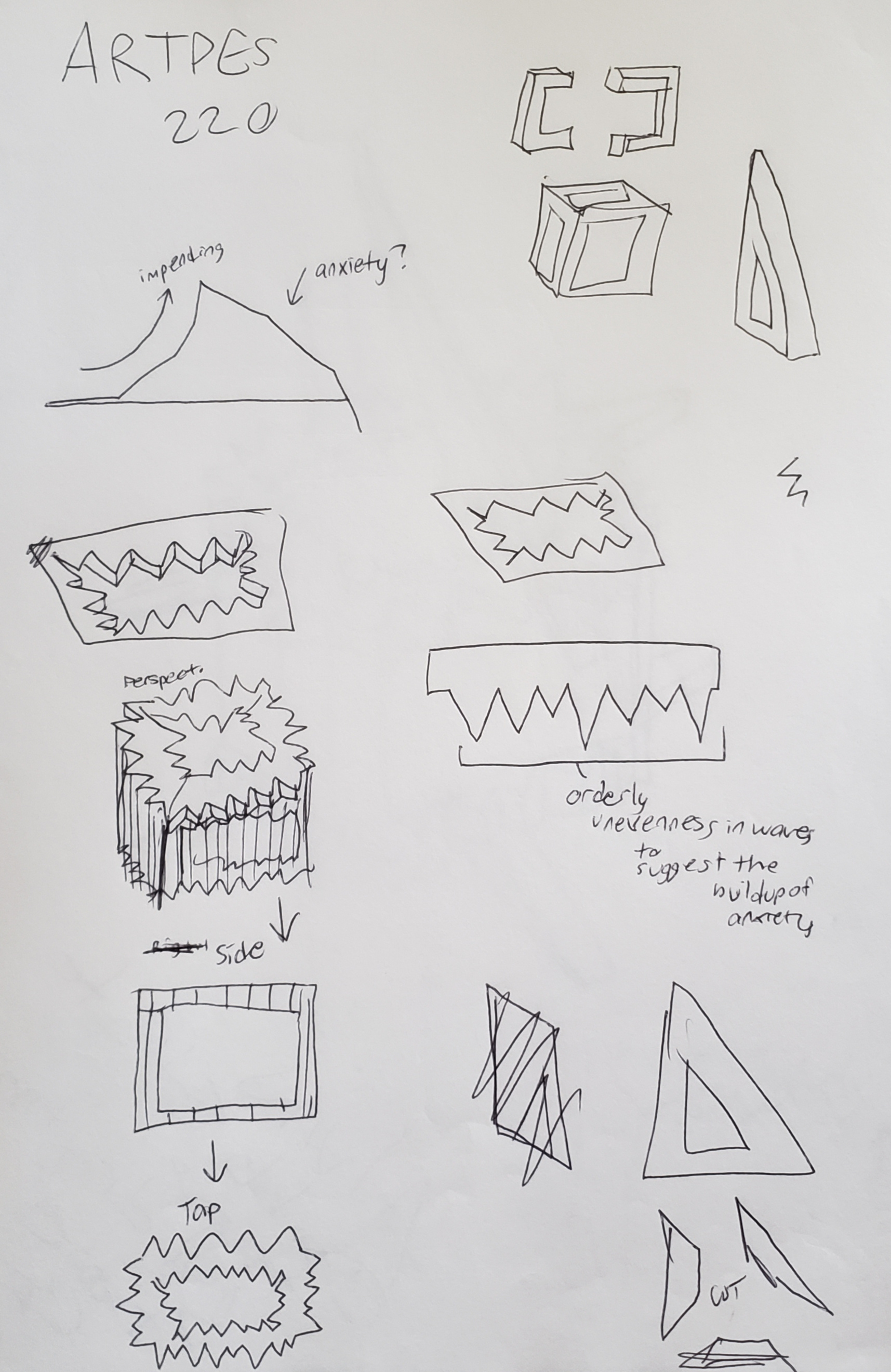
Various sketches of anxiety models.
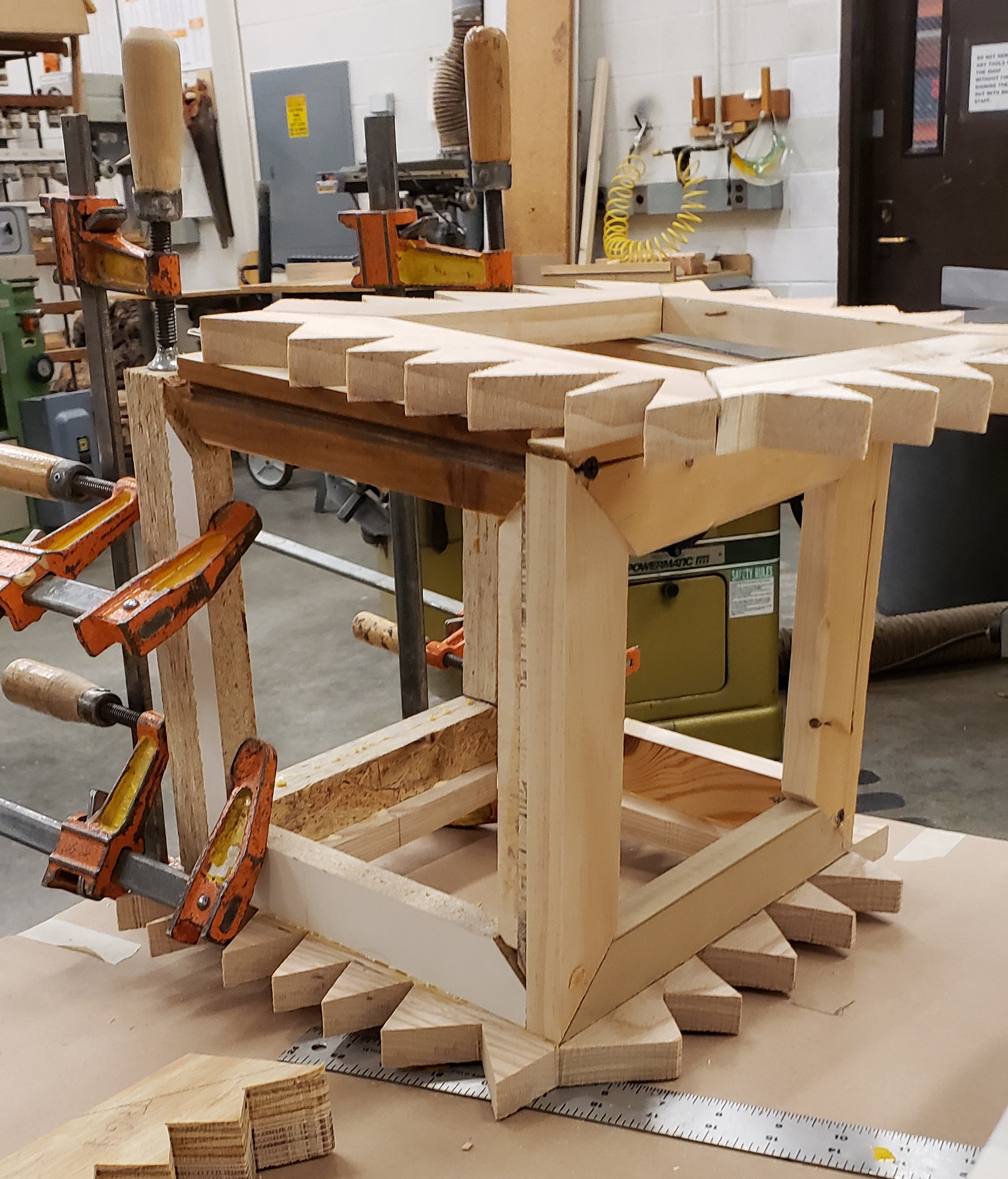
Process Photo of Wooden Anxiety Model A shot of the fabrication process within the Art and Architecture building woodshop at U of M.
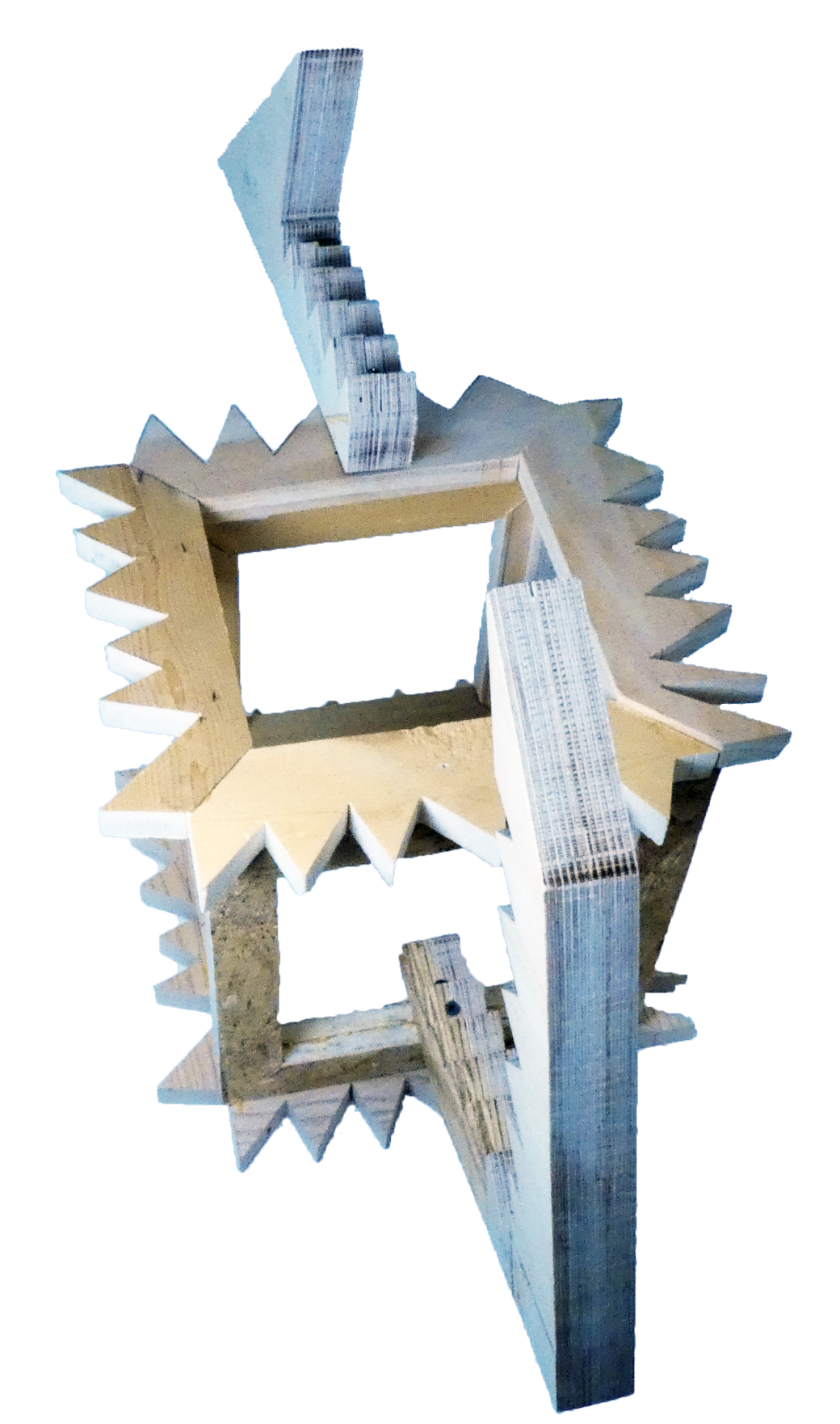
Final Anxiety Model
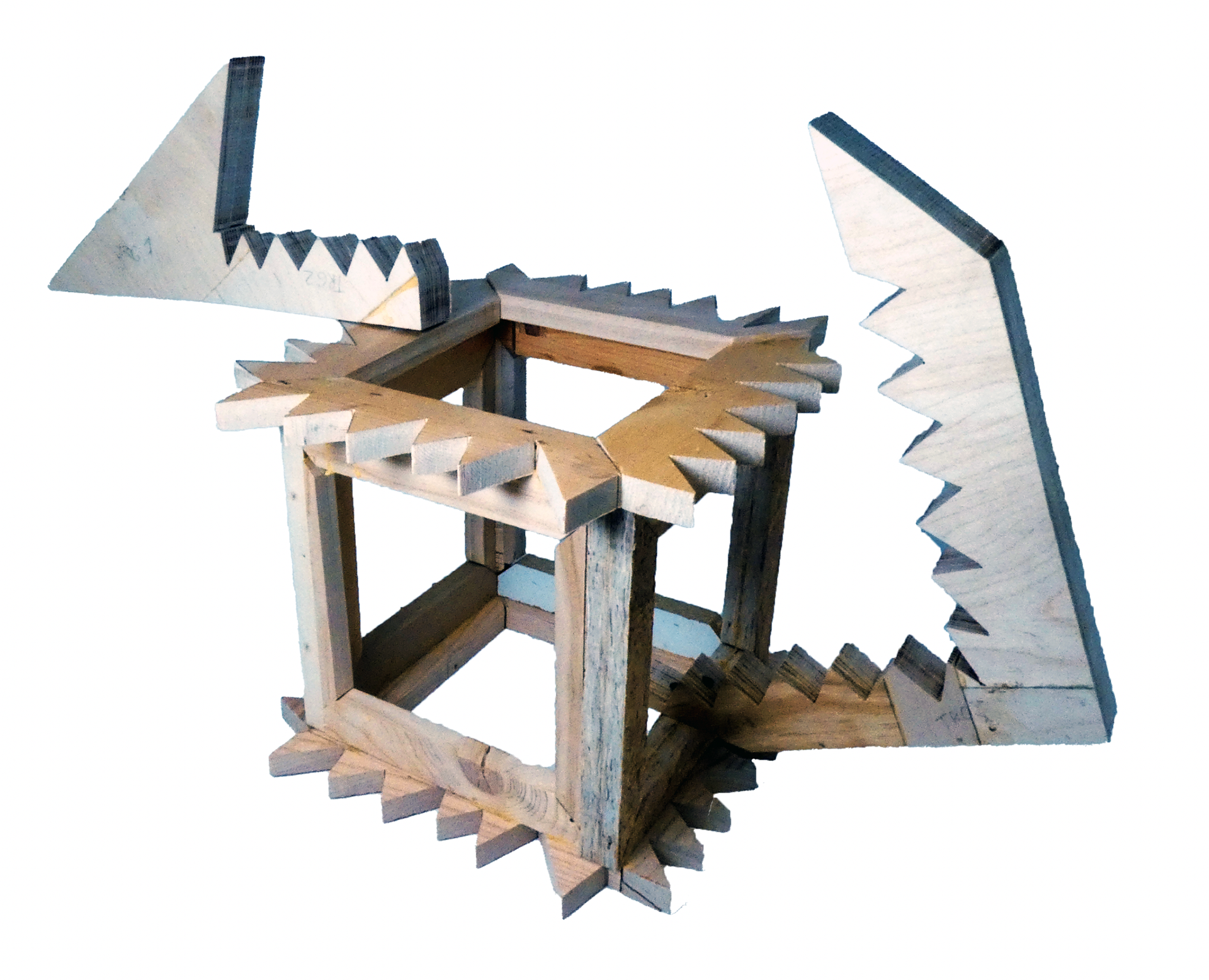
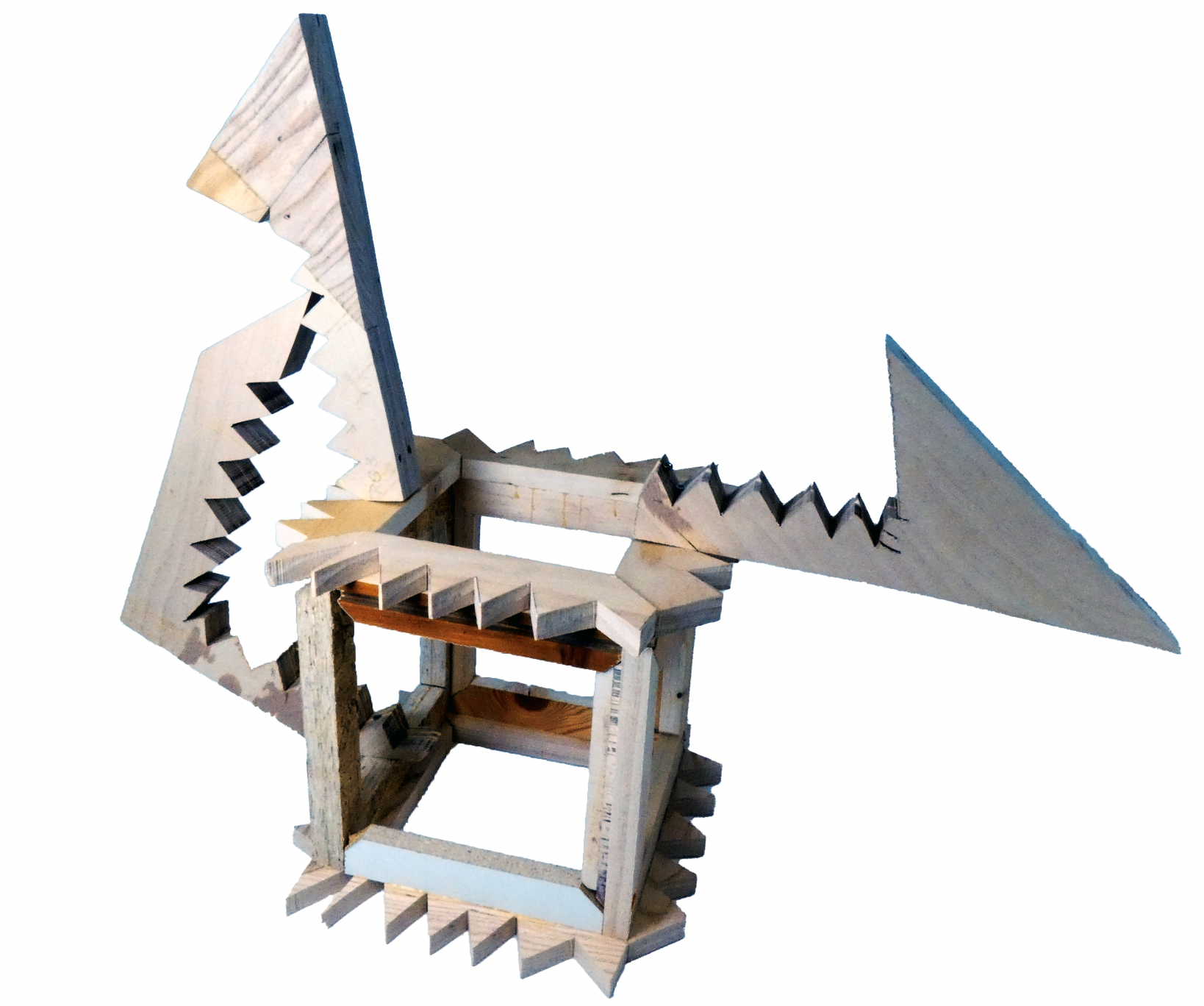
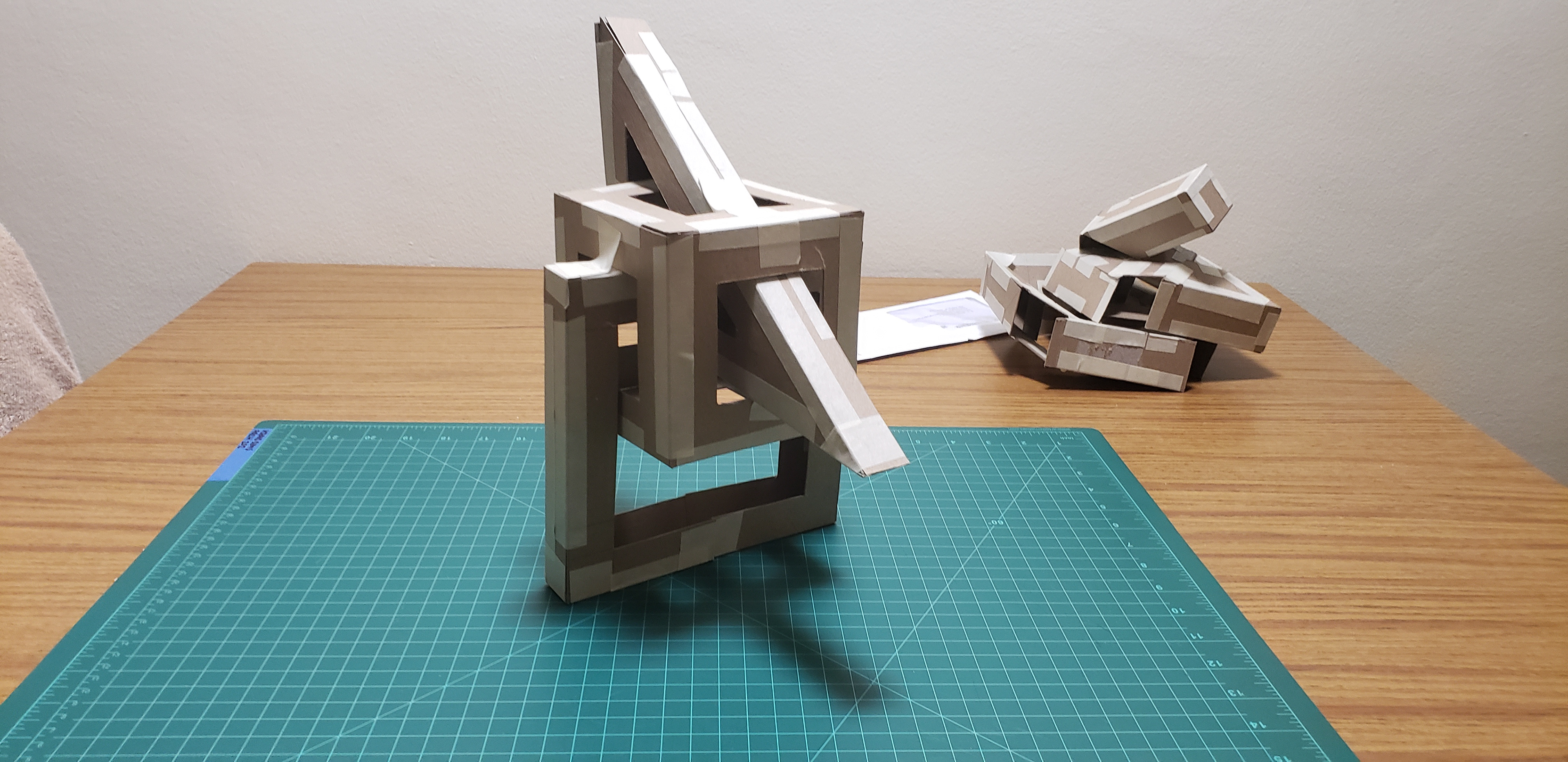
Initial Test Model

Hanging Test Model
Mini Robot Gnome (2019) Classwork. Instructor: Louis Marinaro.
A small sculptural character created using 3D Printing and Rhino 6 software. The object was then cast into an injection mold to create multiples. The initial model is made of orange ABS plastic filament, while the injection molded casting is created with white ABS plastic pellets.
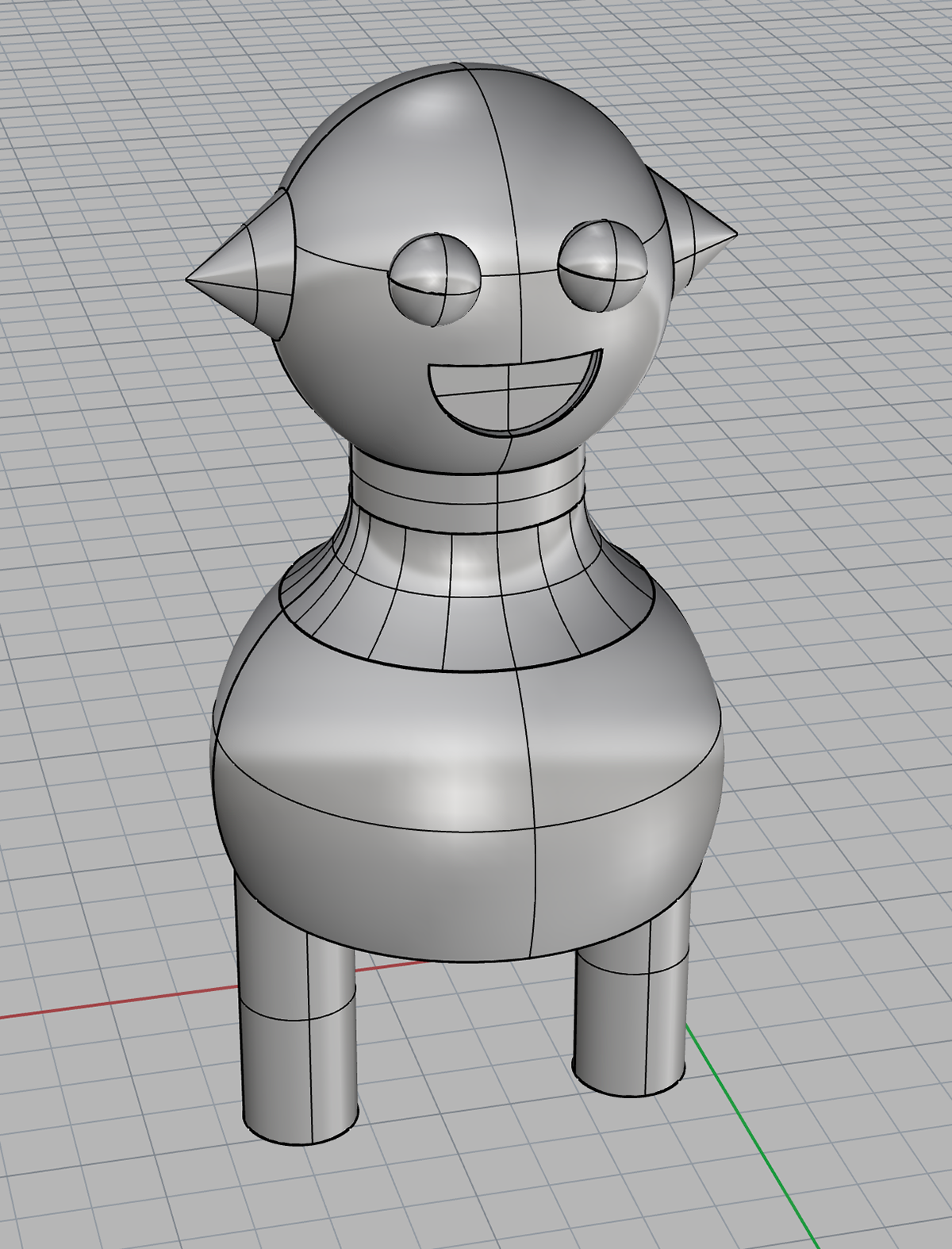
A view of the model in the digital realm of Rhino 6 software.
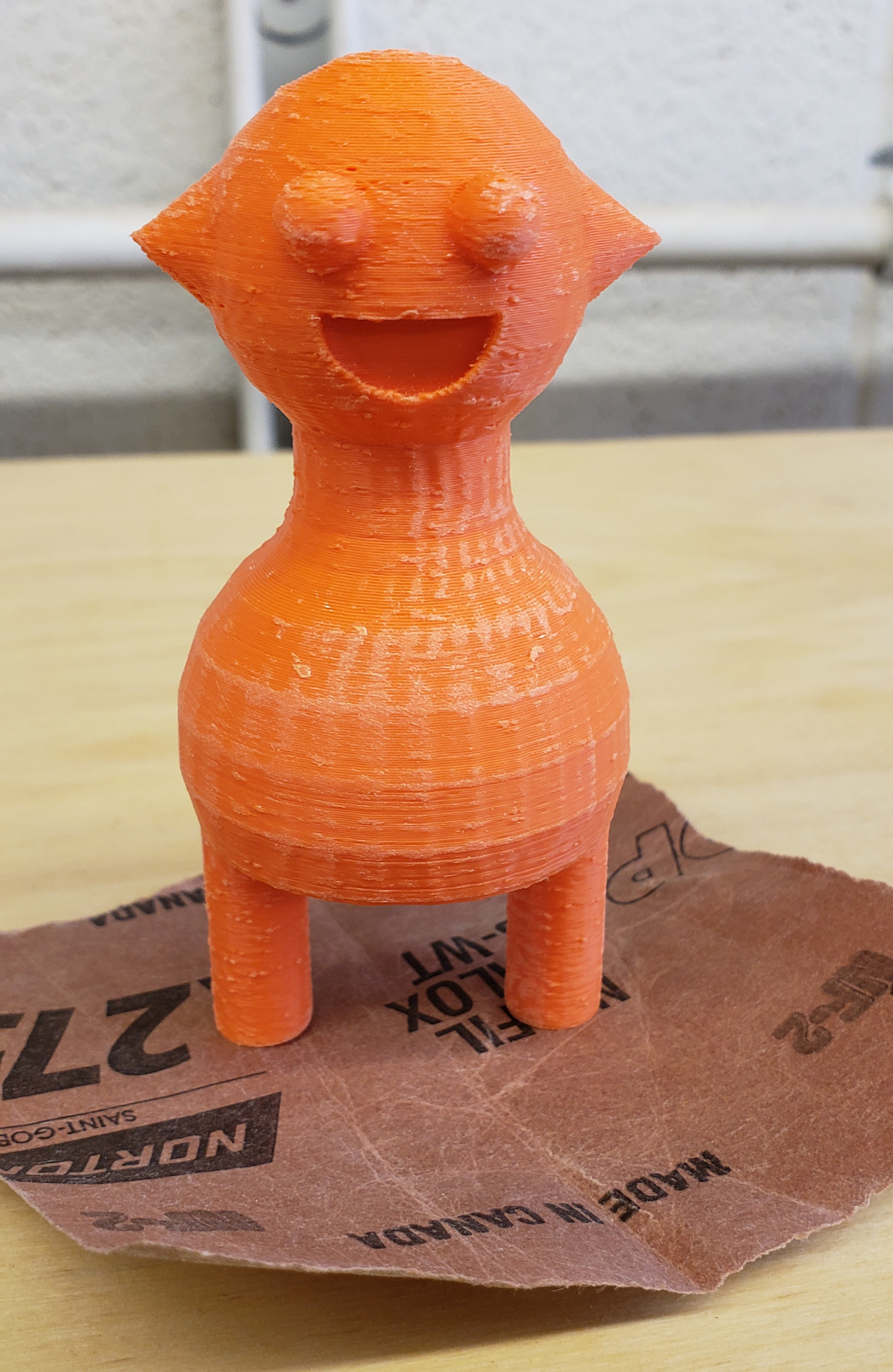
3D printed Rhino model.
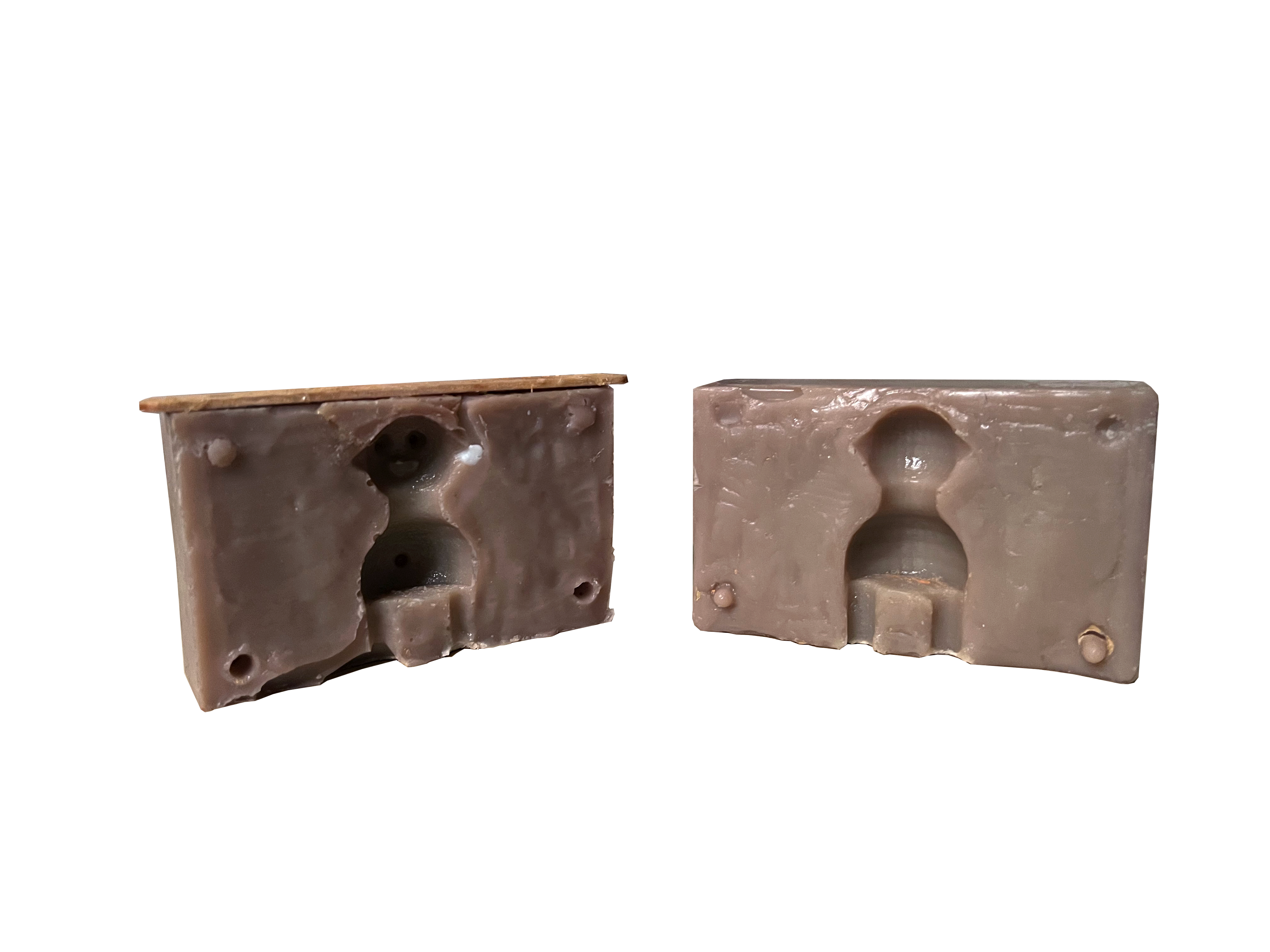
The injection mold formwork with the interior visible.
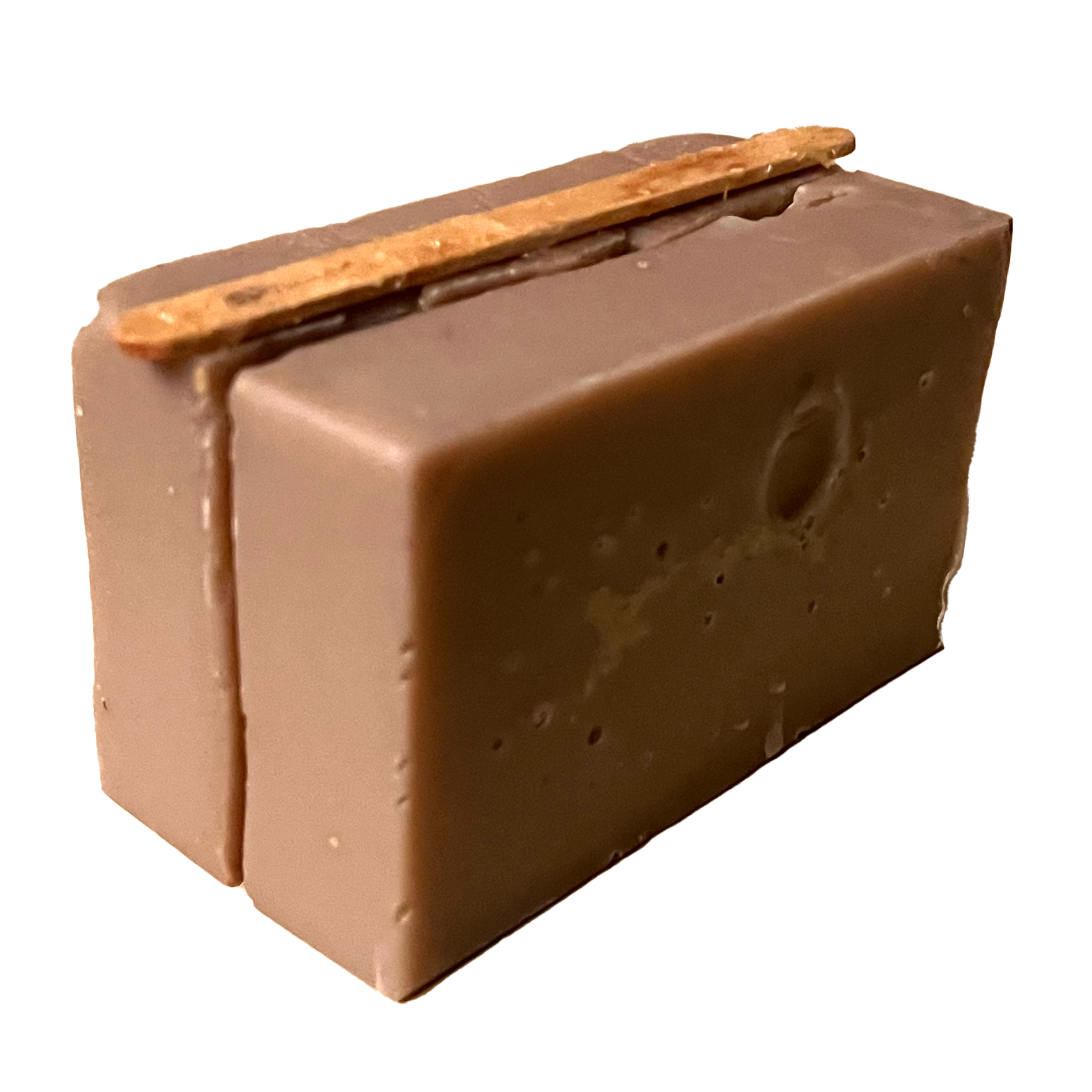
The injection molding formwork closed.
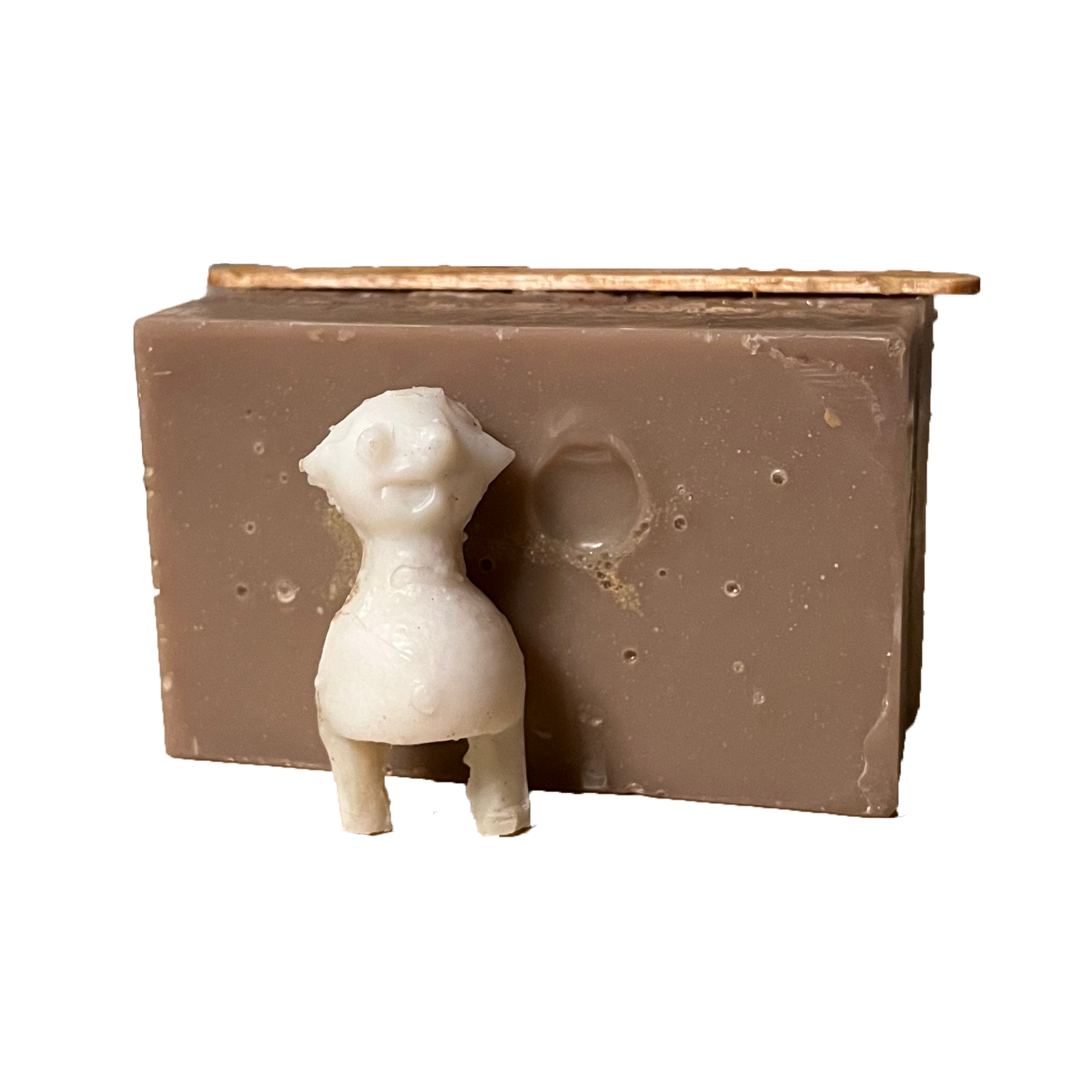
The injection mold formwork with the produced model in frame.

A closer shot of the injection molded model.
Self Portrait in Sculpture (2019). Instructor: Louis Marinaro.
A molded sculpture created of my own head. Smooth-On silicone mix was used to create the interior mold, while cement was used to create the outer shell that houses the silicon mold, as well as the multiples that are produced by it.
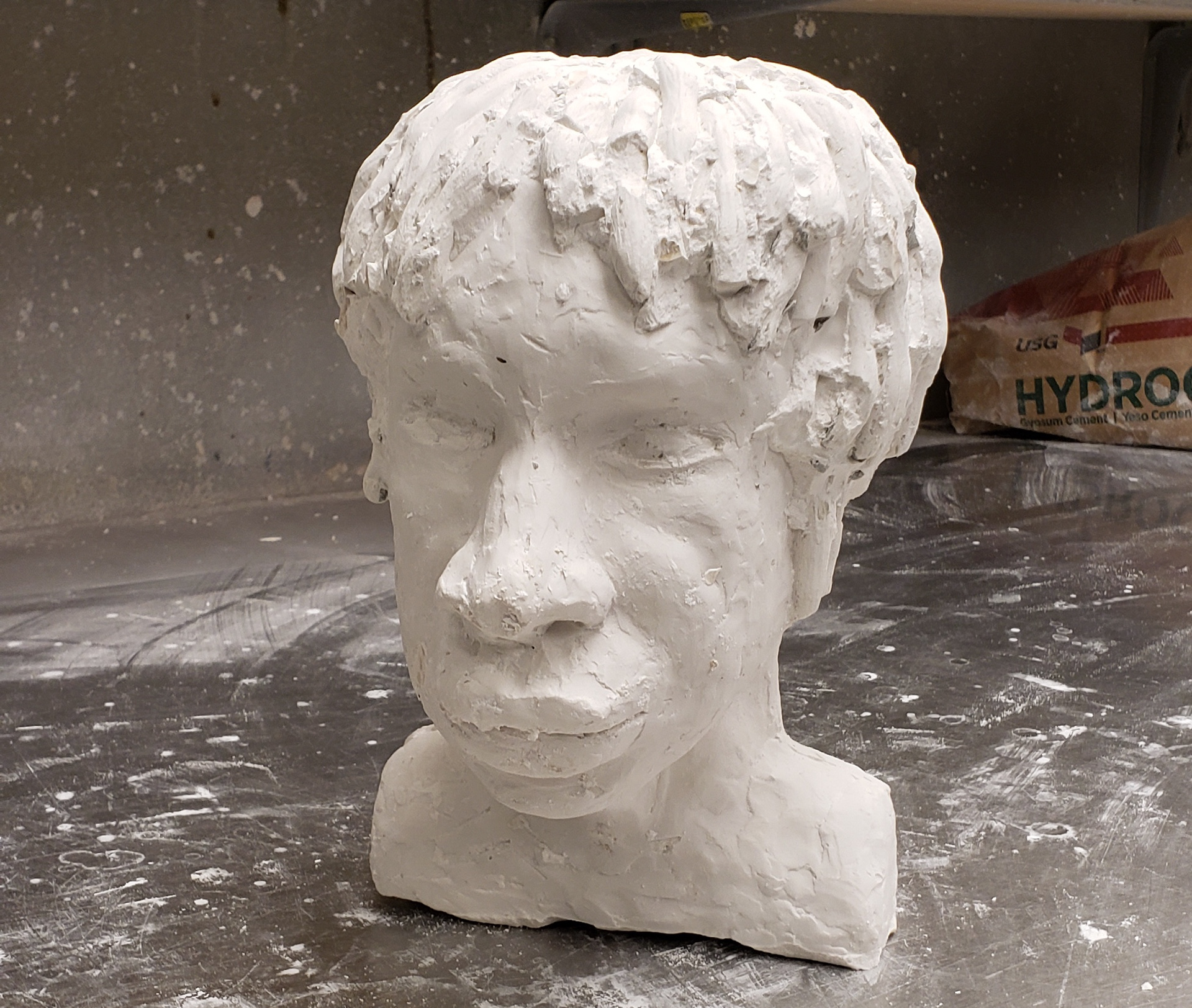
A shot of the finished cement form.

A overhead view of the rubber mold making process with injection mold forms in view.

A closer view of the filled mold through the bore holes.
Slip Cast Molded Cups (2019). Instructor: Louis Marinaro.
A series of ceramic cups created from a slip cast mold. All glazes used are food-safe.
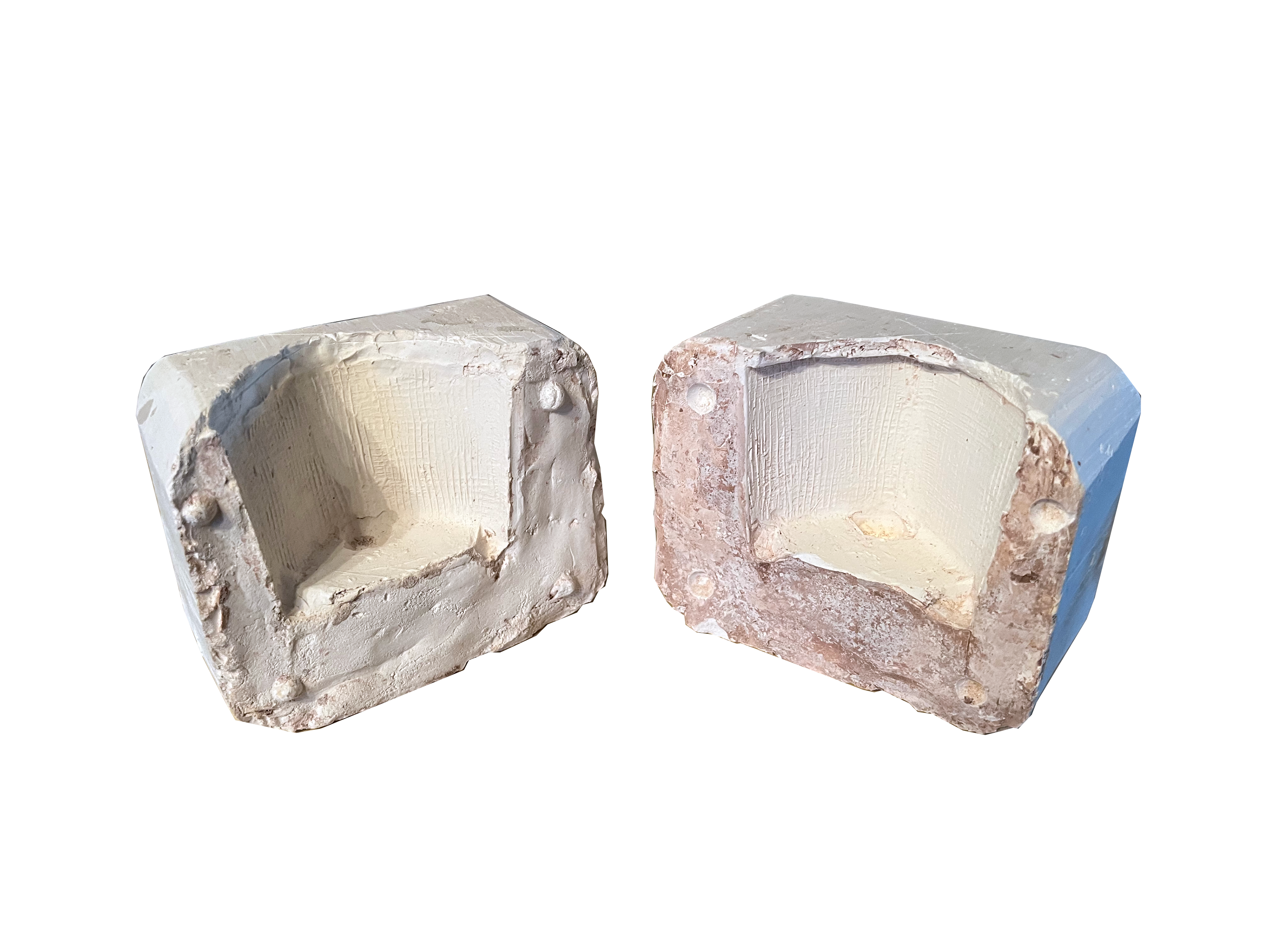
The slip cast formwork.

One of the ceramic castings.

Another ceramic casting.
Asymmetrical Rectangles, (2017) Classwork. Instructor: Jessica Frelinghuysen.
This sculpture, titled “Asymmetrical Rectangles”, is responding to the volumetric, asymmetrical, and rectangular forms that are repeatedly found in George Vantongerloo’s “Volume Relations”. My piece incorporates a variation on Vantongerloo’s central void—putting it to the right of the piece instead of the center. The media used for this piece includes multiple 1”x 4” wood planks and wood glue.
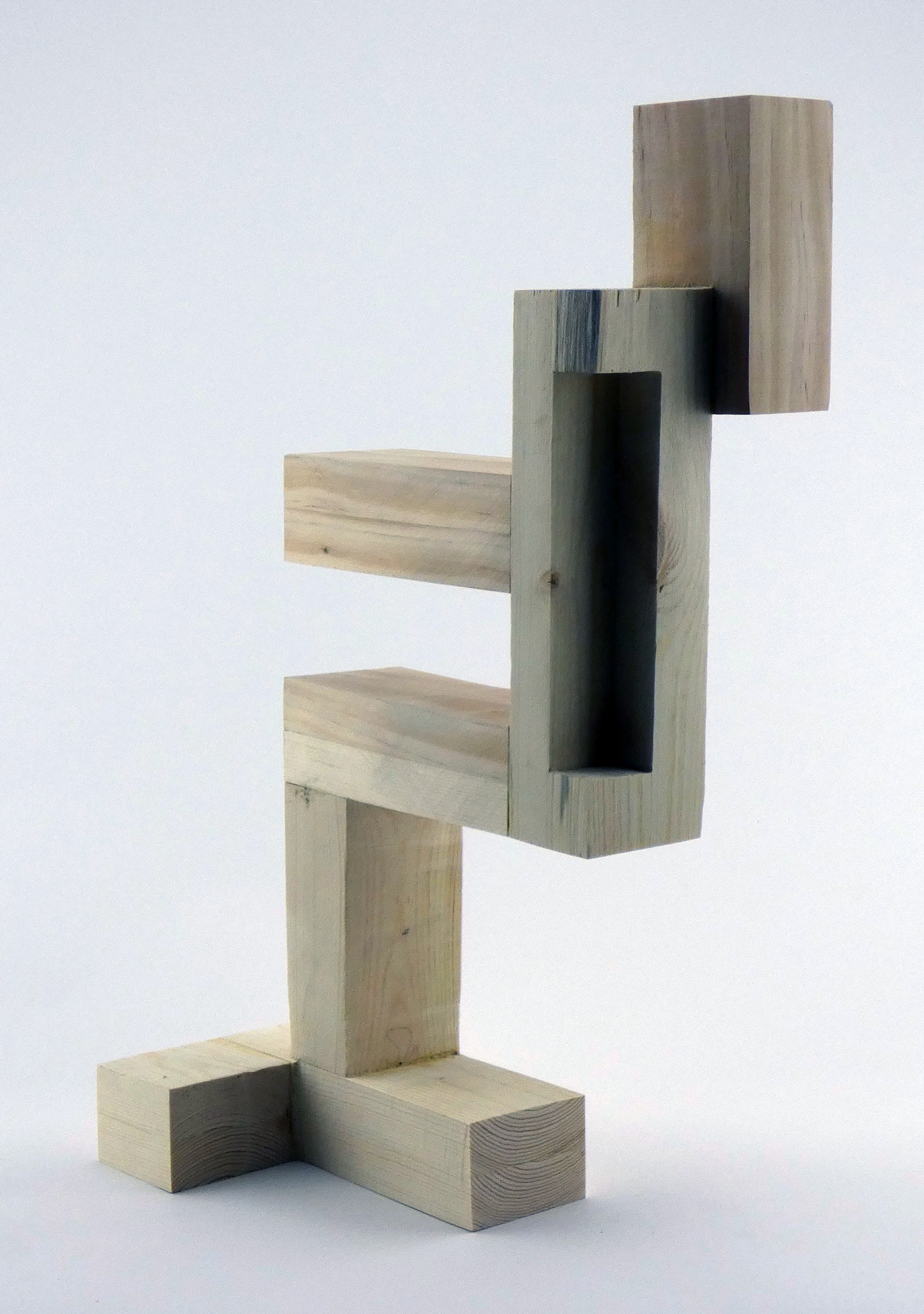
Front view.
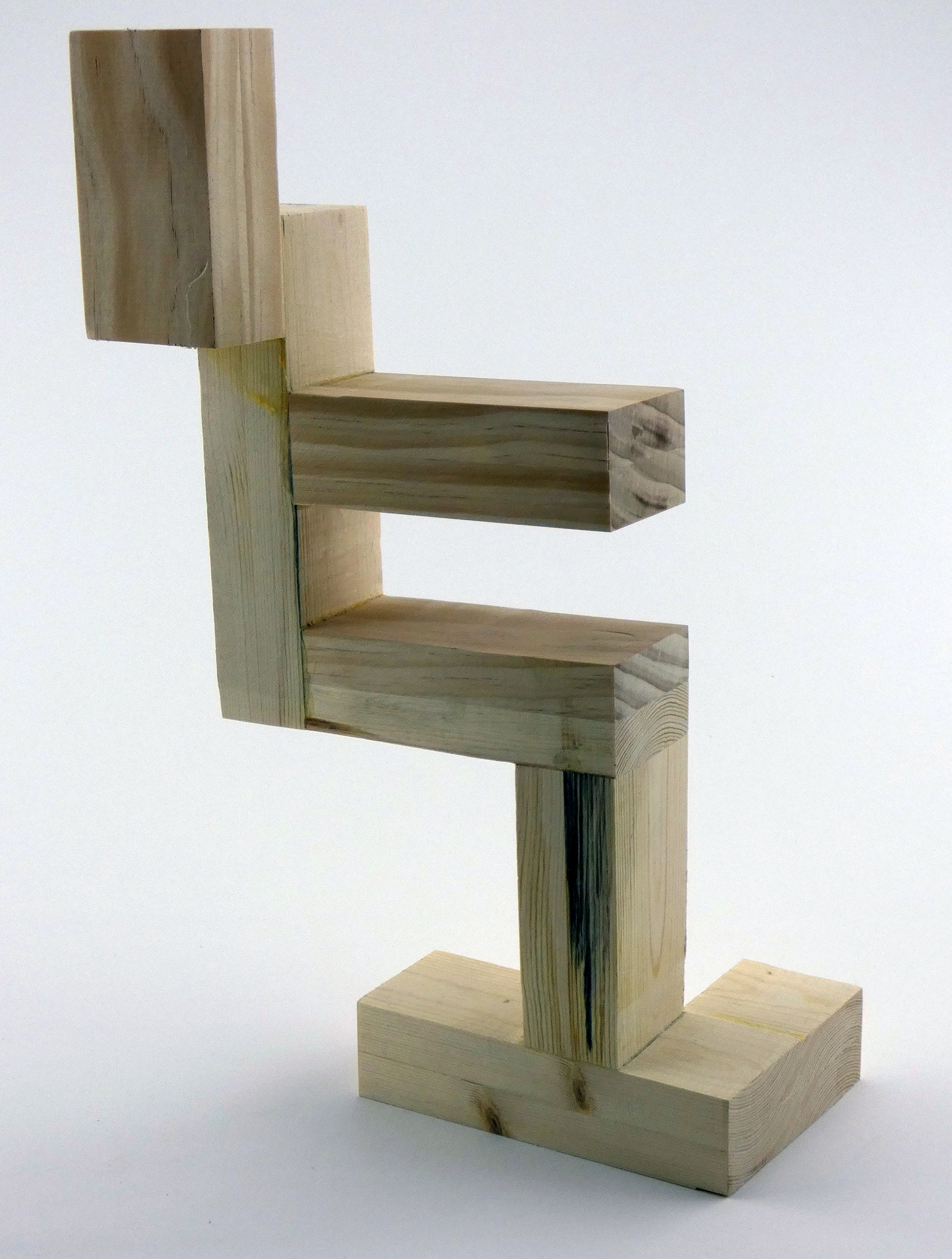
Back view.
Modules (2017), Classwork, Instructor: Jessica Frelinghuysen.
These laser cut, balsa wood modules were created to be an environmentally conscious toy for children. They were made for creative play, as they can be stacked and manipulated in a variety of ways. They are 1/4”x2.5”x3”.
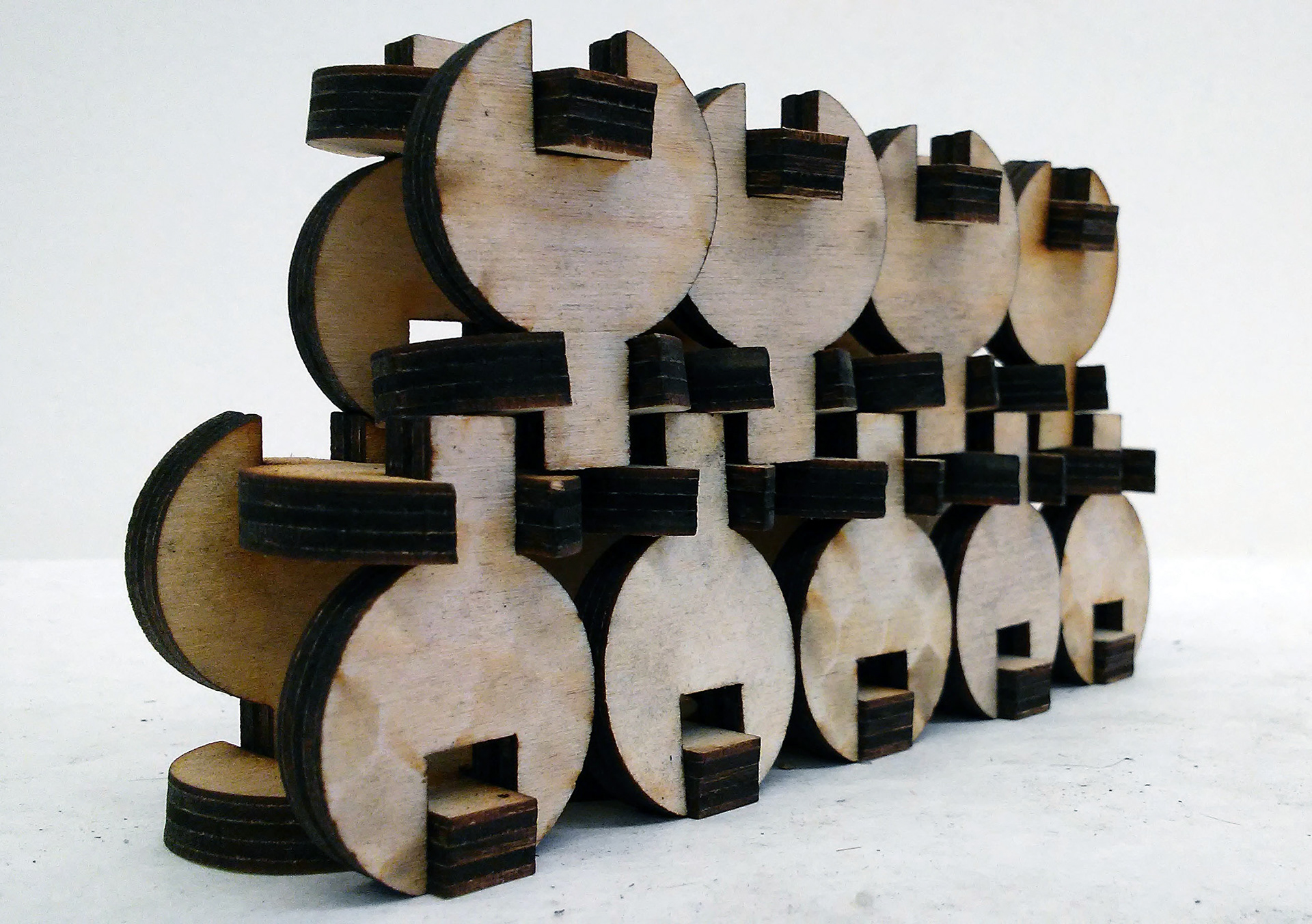
One configuration of the modular toys.
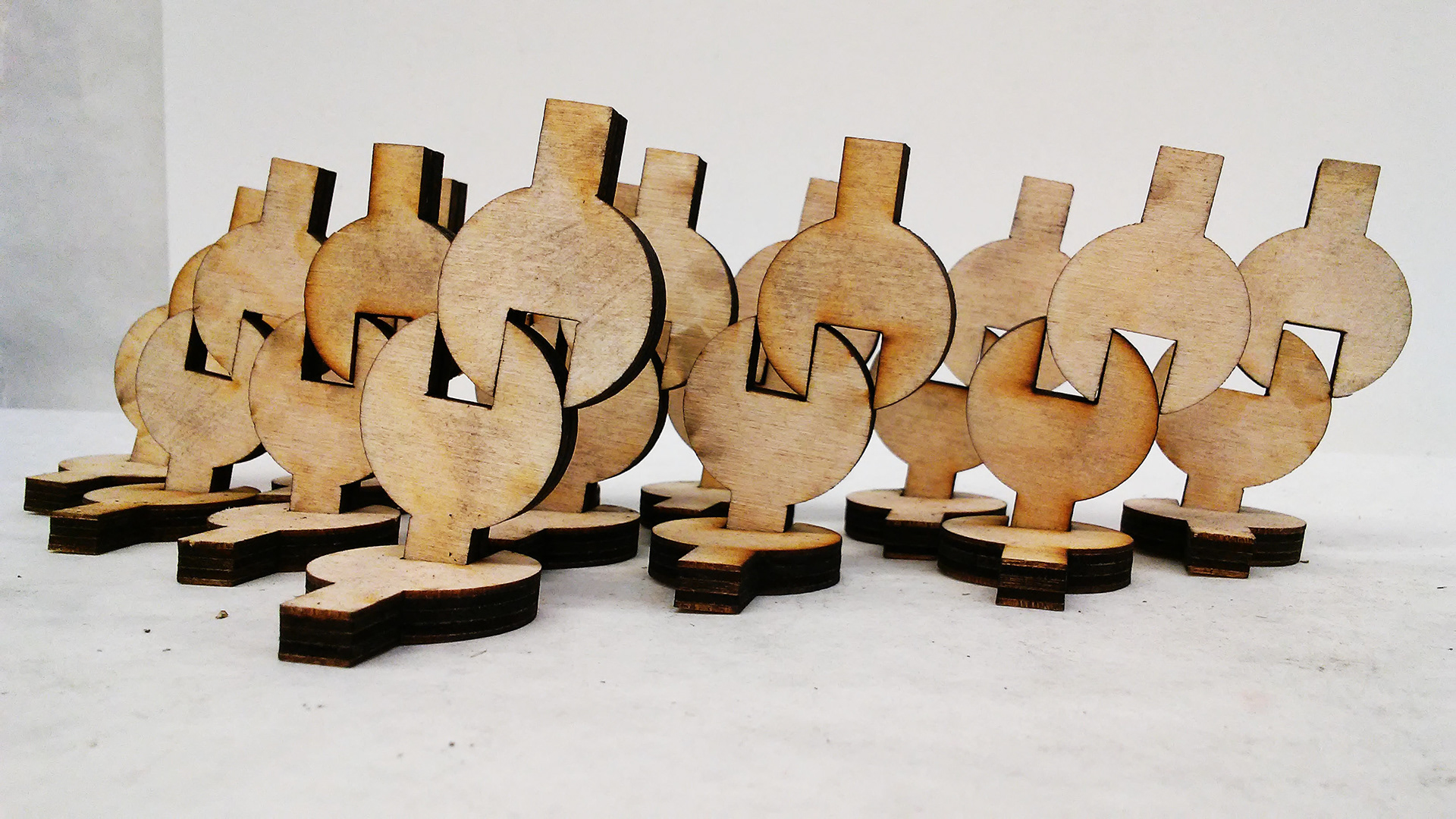
Alternate configuration of the toys.
Line Sculpture (2017), Classwork, Instructor: Jessica Frelinghuysen.
These copper wire line sculptures were created using methods of soldering, hammering, and other metal bending techniques as well as drilling and cutting for the wooden base.
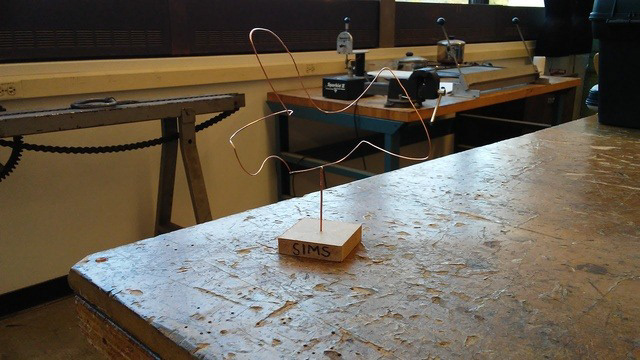
A shot of one of the original line sculptures.
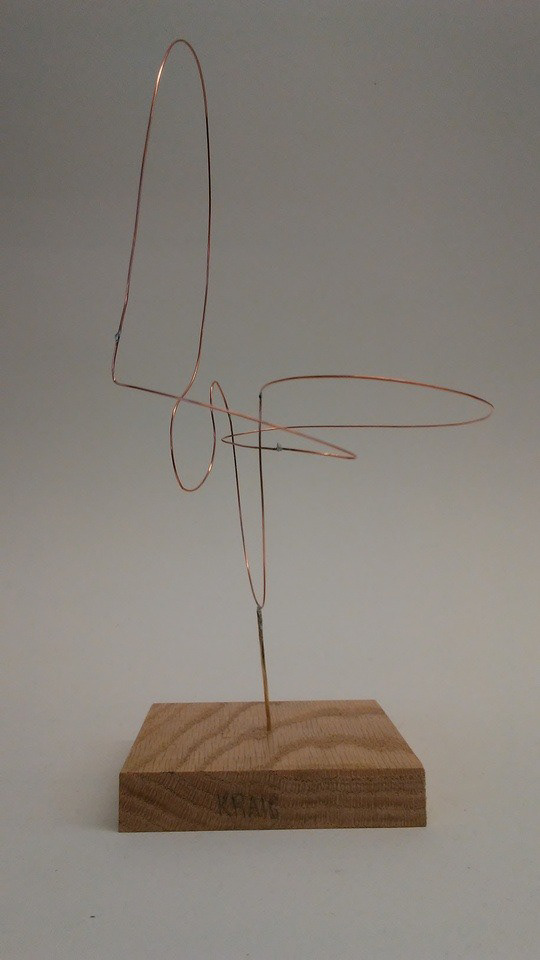
The final line sculpture.
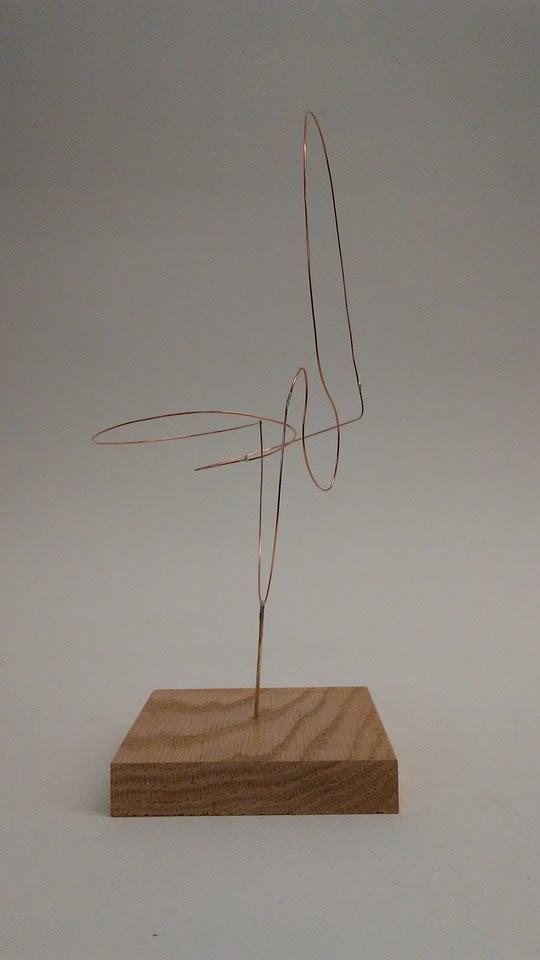
Additional shot of the final line sculpture.

Additional shot of the final line sculpture.
Scale Shift (2017), Classwork, Instructor: Jessica Frelinghuysen.
The creation of a small-scale clay maquette informed the outcome of this large inflatable plastic installation.

The initial clay maquette.

A shot of the installation process.
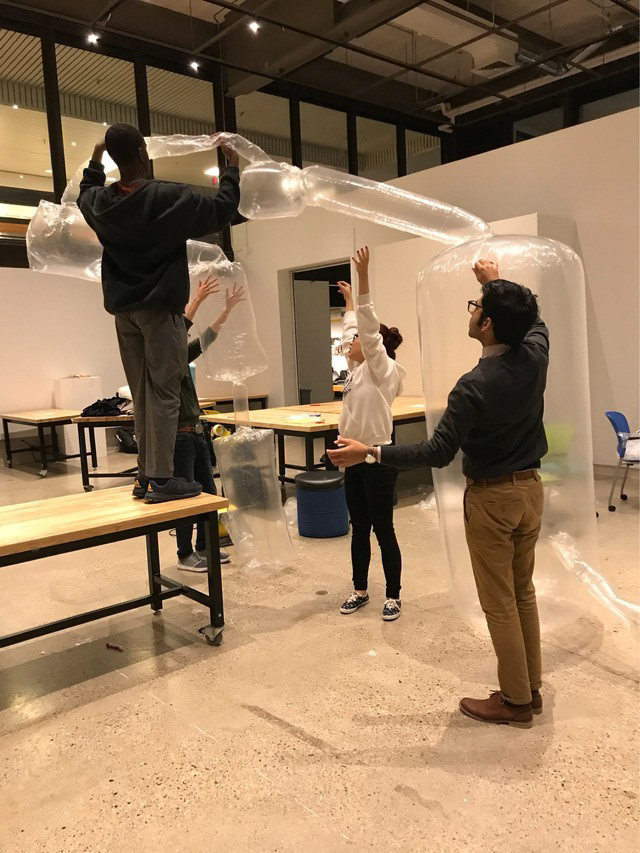


A final shot of the installation in place.
Reuse + Mutation (2017). Classwork, Instructor: Jessica Frelinghuysen.
This project was aimed at providing skills in hand sewing and material alteration through creating a new organic form from a chosen found object. My chosen object was the penguin stuffed animal from which an insect-like form was created.
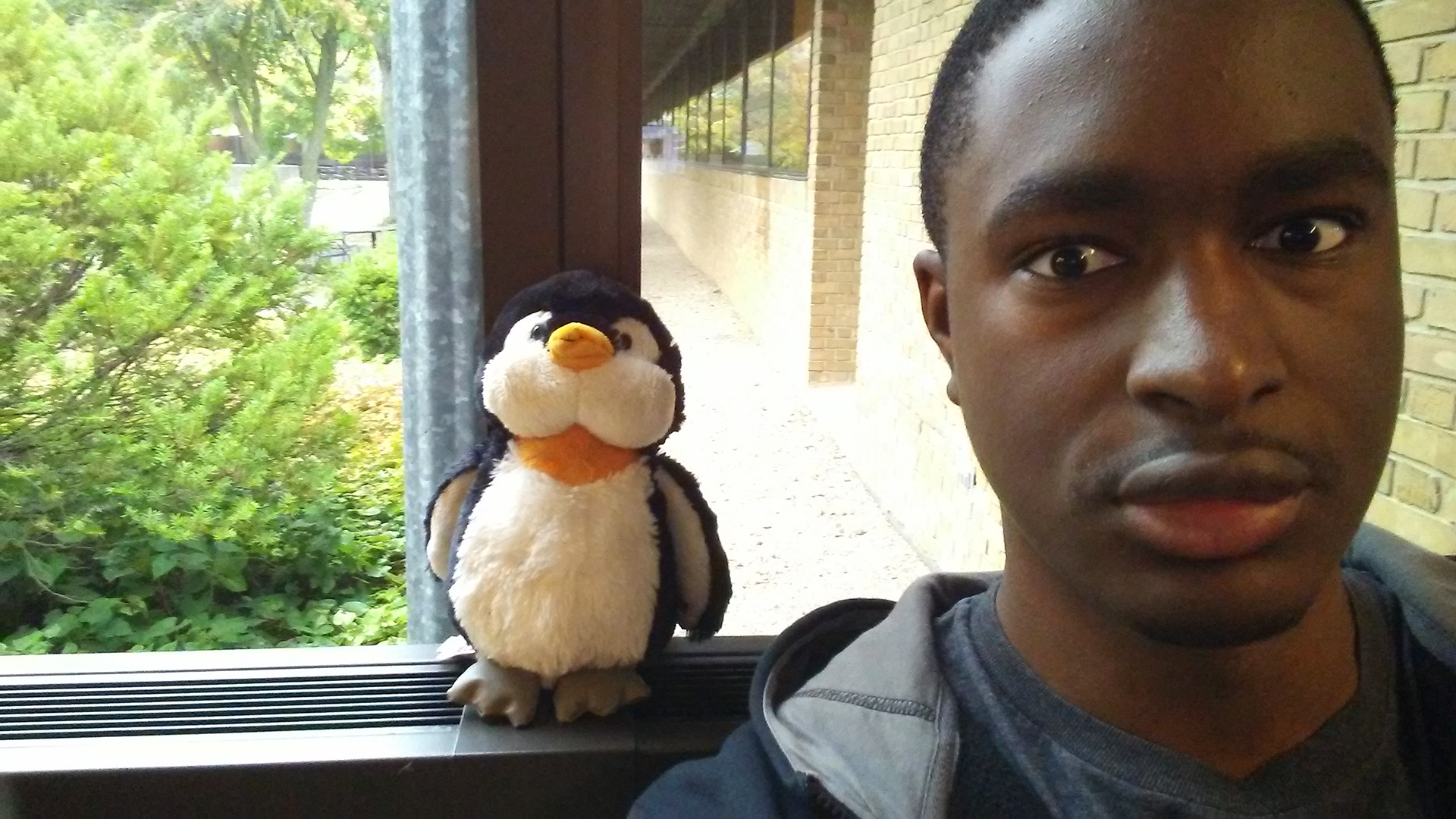
The original donor stuffed animal before alterations were performed.
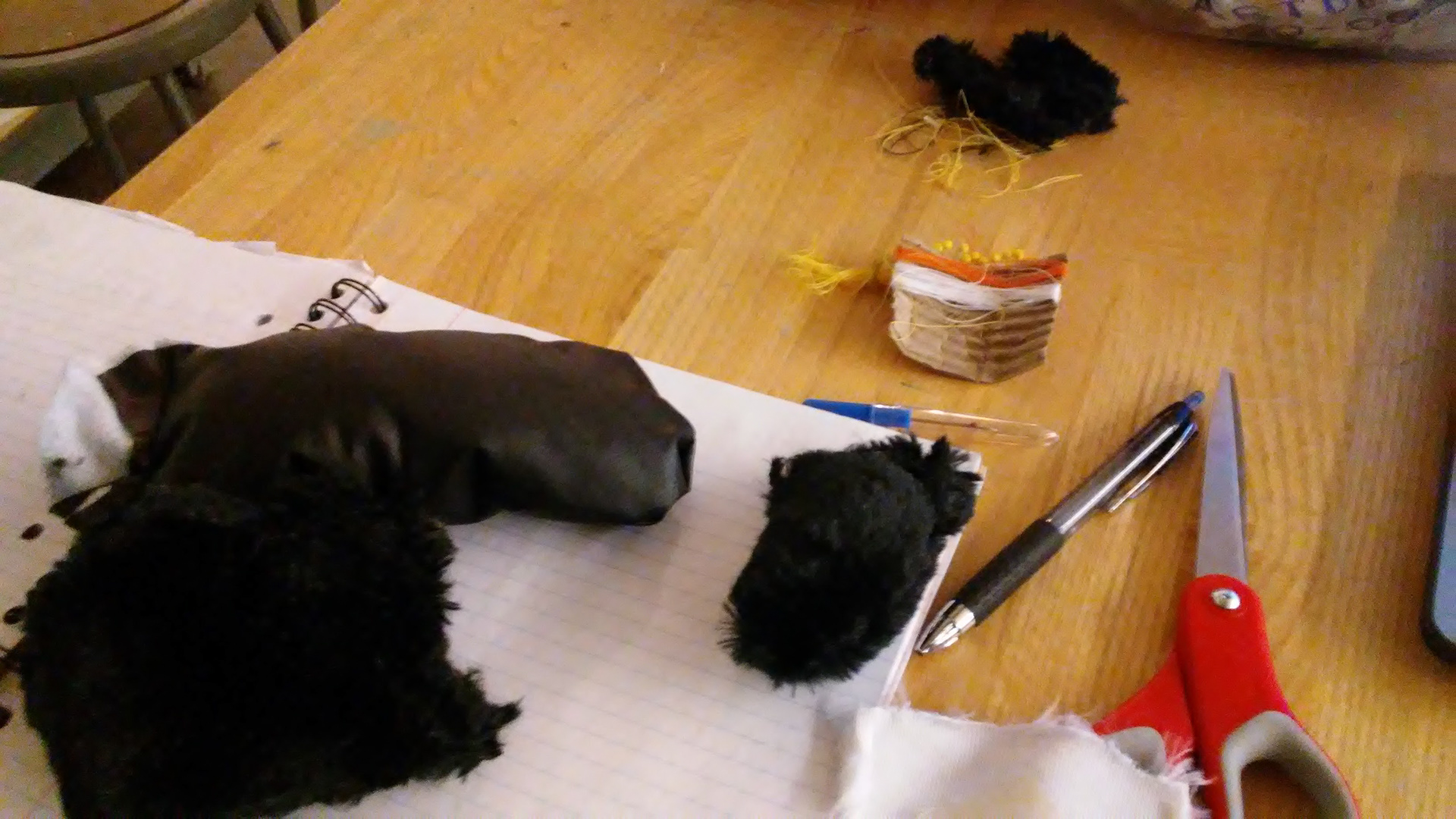
Alteration in progress.
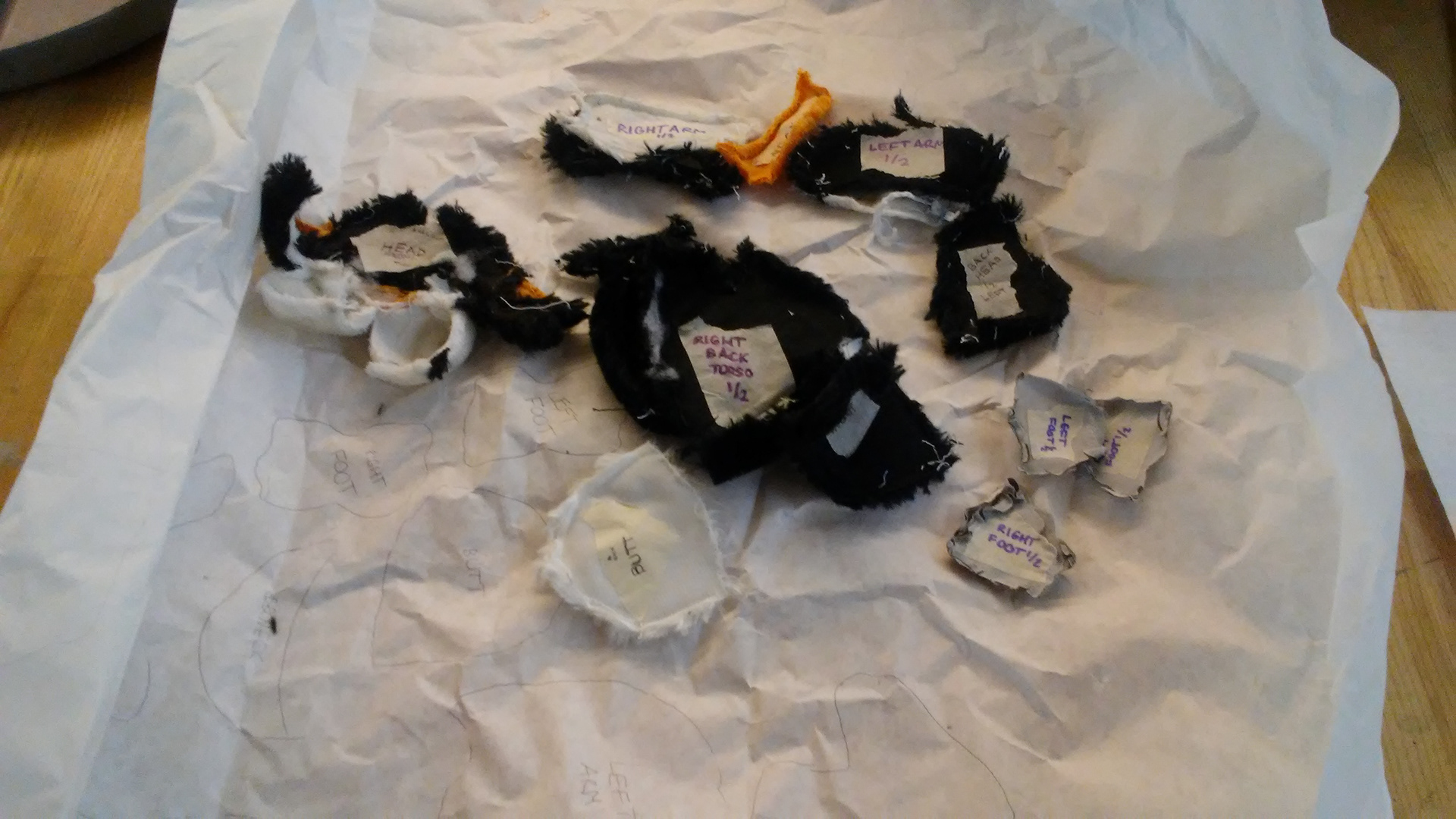
Another process image showing the knolled fabric panels from the penguin.
